

About the Planets
Our solar system has eight planets, and five dwarf planets - all located in an outer spiral arm of the Milky Way galaxy called the Orion Arm.
Dwarf Planets
The solar system has eight planets: Mercury, Venus, Earth, Mars, Jupiter, Saturn, Uranus, and Neptune. There are five officially recognized dwarf planets in our solar system: Ceres, Pluto, Haumea, Makemake, and Eris.
The inner, rocky planets are Mercury , Venus , Earth , and Mars . These worlds also are known as terrestrial planets because they have solid surfaces. Mercury, Earth, and Mars are currently being explored by spacecraft. Two rovers are on the surface of Mars. NASA's rover – Perseverance – landed on Mars on Feb. 18, 2021. Three missions are in development to return to Venus.
The outer planets are gas giants Jupiter and Saturn , and ice giants Uranus and Neptune . NASA's Juno spacecraft is on an extended mission at Jupiter, and ESA's JUICE mission is on the way to the Jovian system. NASA's Europa Clipper is launching in October 2024 to explore Jupiter's icy moon, Europa. The agency's Dragonfly rotorcraft lander will launch to Saturn's moon, Titan, no earlier than 2028.
Beyond Neptune, a newer class of smaller worlds called dwarf planets reign, including longtime favorite Pluto . NASA's New Horizons spacecraft visited Pluto in 2015, and is currently exploring the Kuiper Belt beyond Pluto. The other dwarf planets are Ceres , Makemake , Haumea , and Eris . Ceres, by the way, is the only dwarf planet in the inner solar system. It's located in the main asteroid belt between Mars and Jupiter.
Thousands more planets have been discovered beyond our solar system. Scientists call them exoplanets (exo means "from outside").
Planet Facts
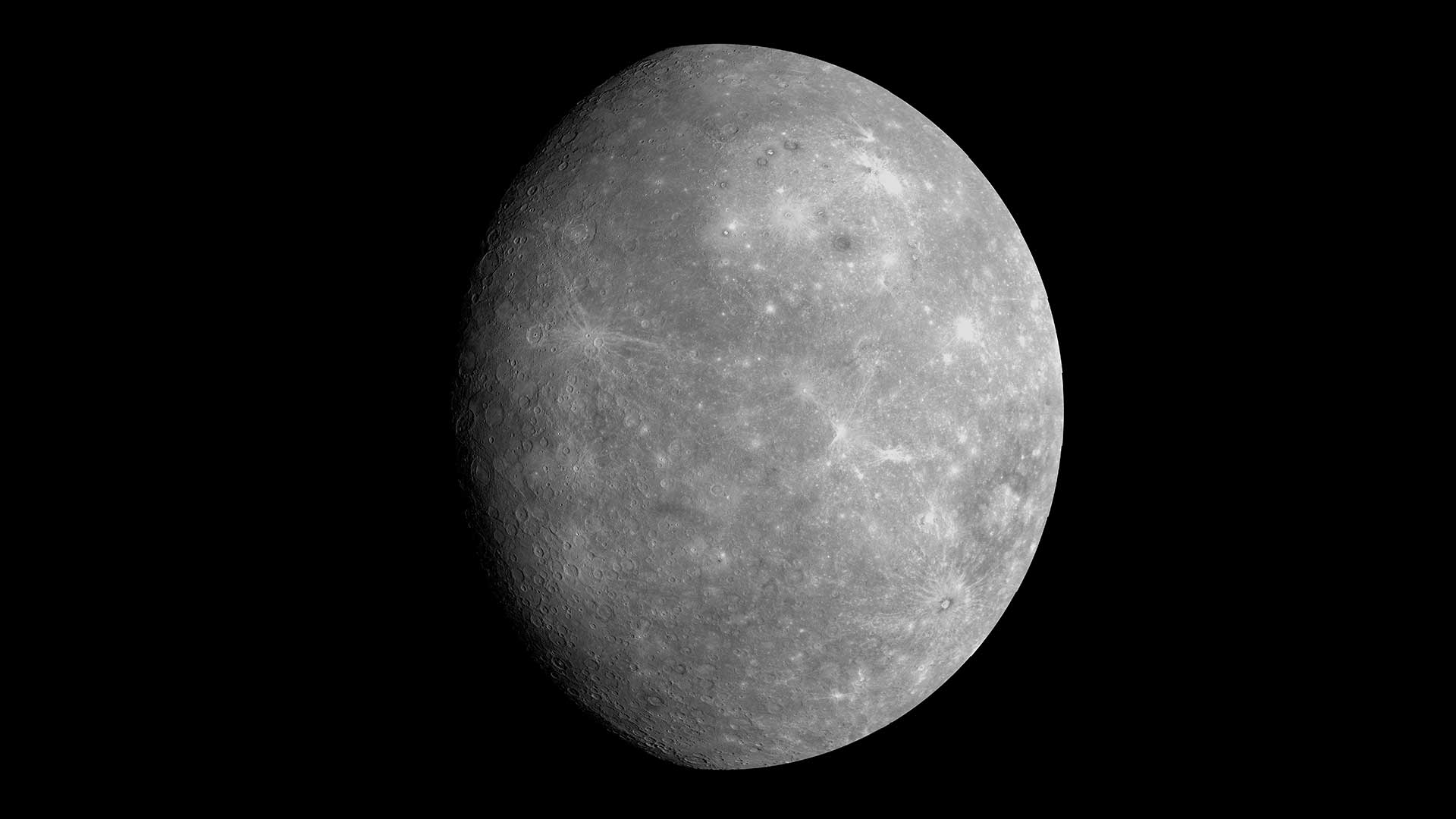
Mercury Facts
The smallest planet in our solar system and nearest to the Sun, Mercury is only slightly larger than Earth's Moon. From the surface of Mercury, the Sun would appear more than three times as large as it does when viewed from Earth, and the sunlight would be as much as seven times brighter.
Explore Mercury
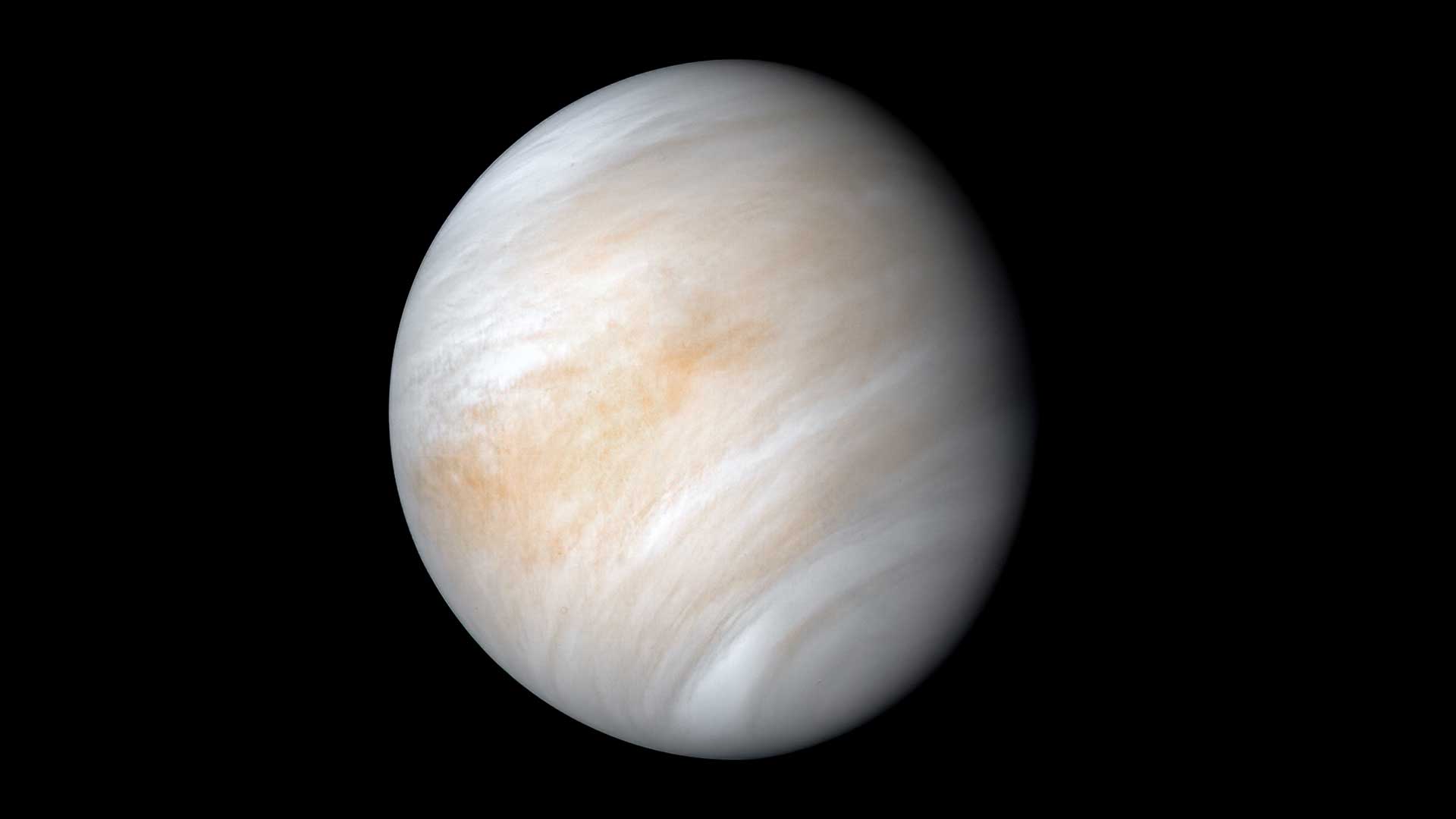
Venus Facts
Venus is the second planet from the Sun, and Earth's closest planetary neighbor. It's the hottest planet in our solar system, and it is sometimes called Earth's twin.
Explore Venus
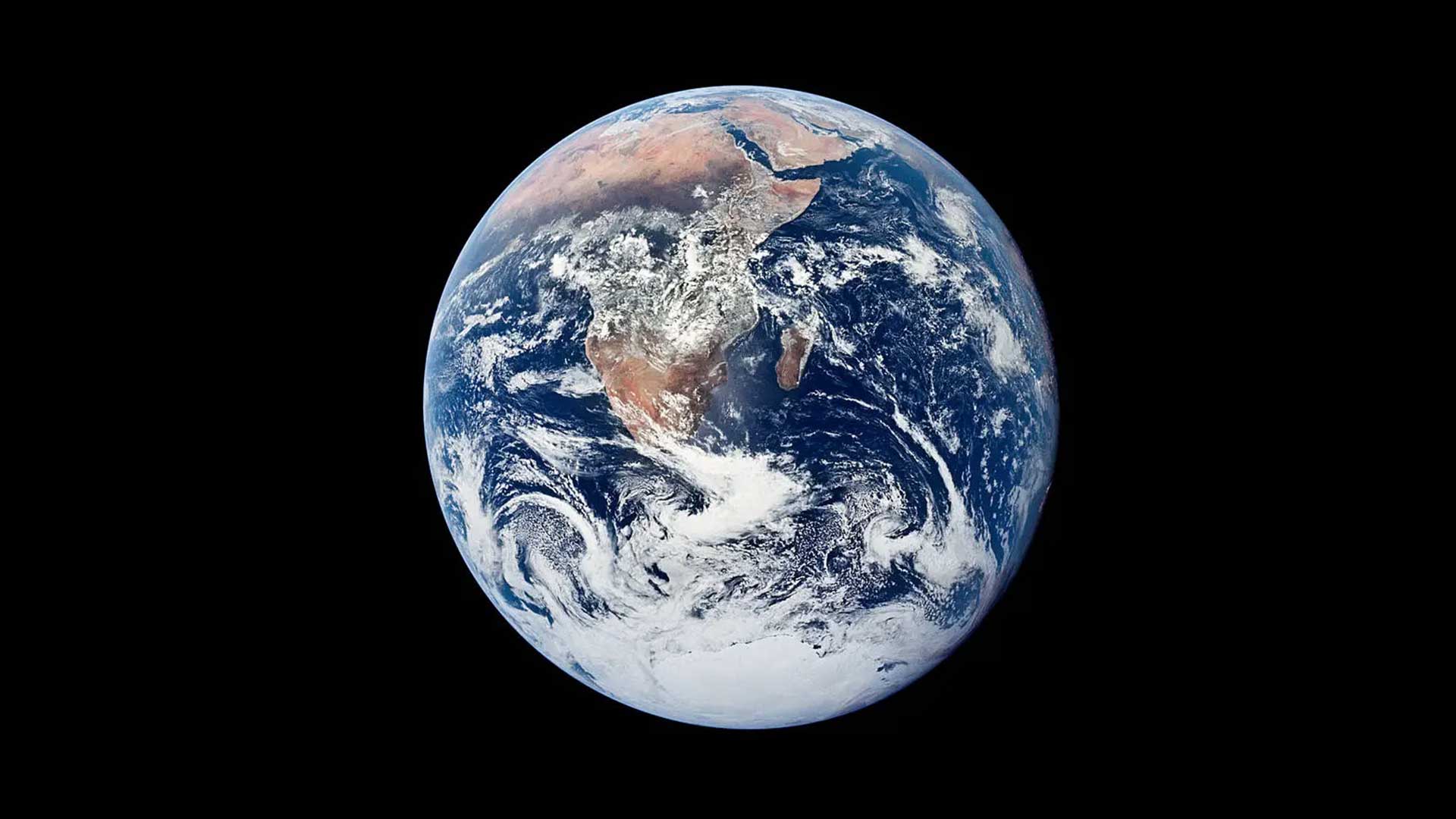
Earth Facts
Earth – our home planet – is the third planet from the Sun, and the fifth largest planet. It's the only place we know of inhabited by living things.
Explore Earth
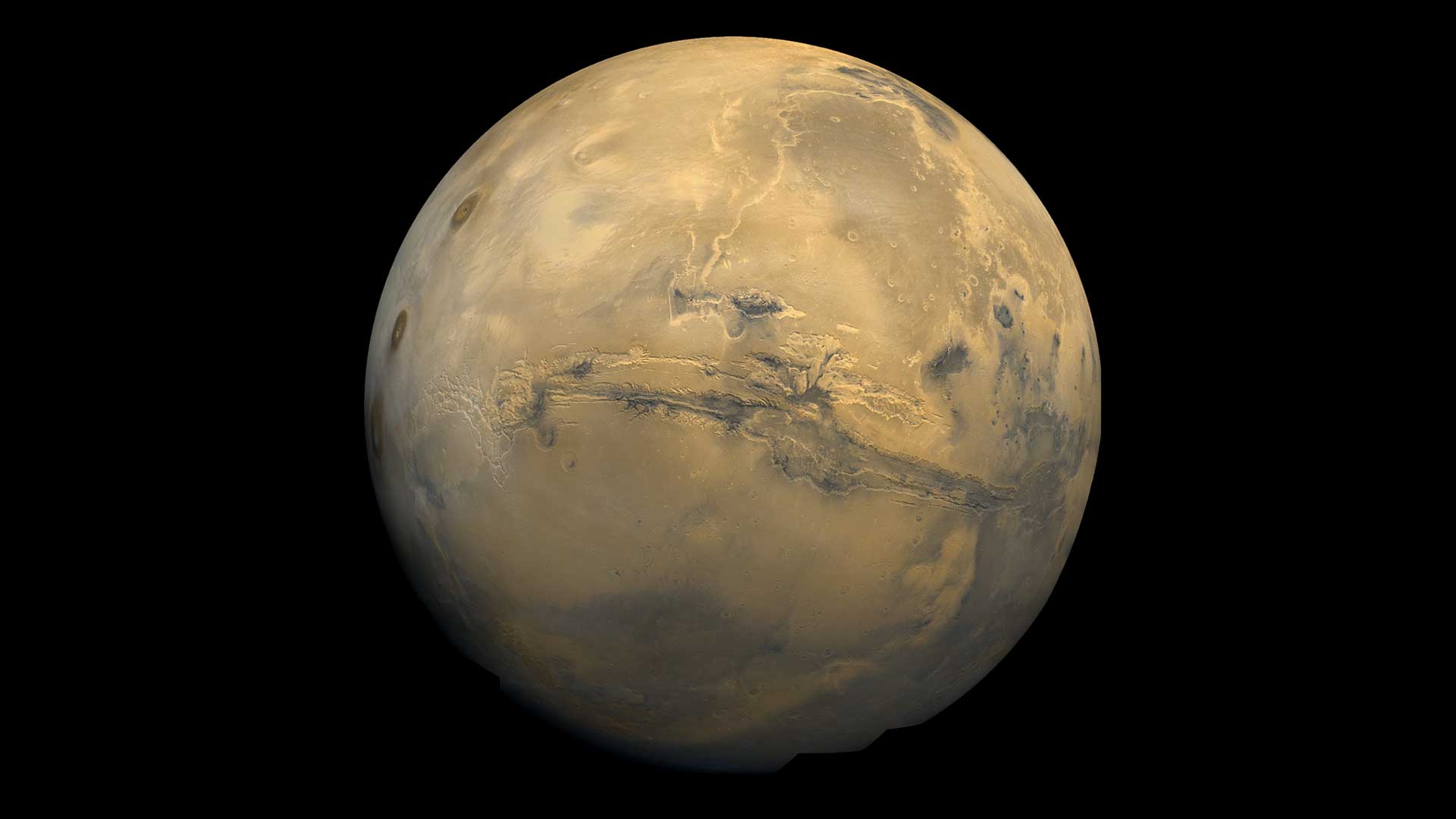
Mars – the fourth planet from the Sun – is a dusty, cold, desert world with a very thin atmosphere. This dynamic planet has seasons, polar ice caps, extinct volcanoes, canyons and weather.
Explore Mars
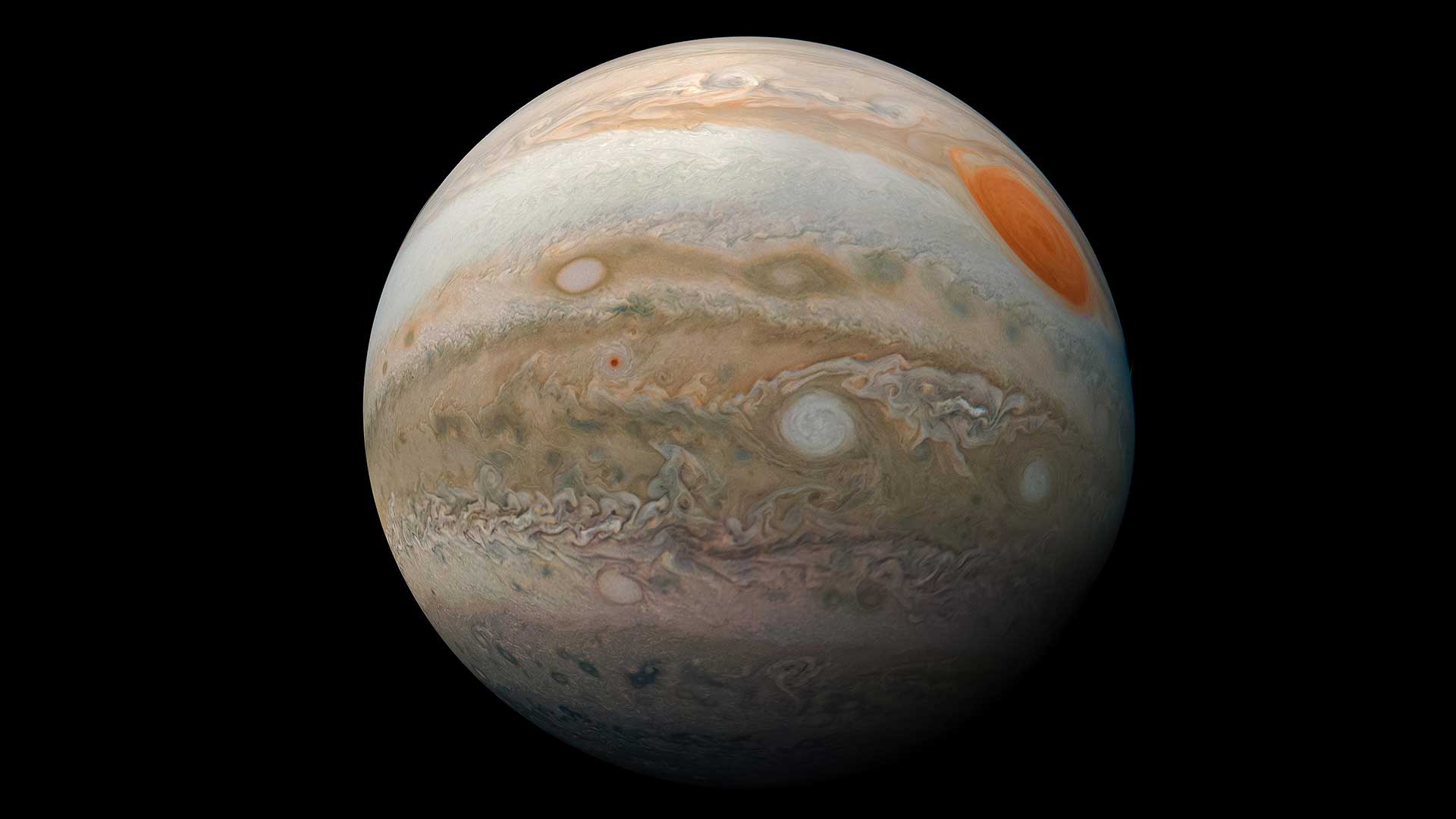
Jupiter Facts
Jupiter is the largest planet in our solar system – if it were a hollow shell, 1,000 Earths could fit inside. It's also the oldest planet, forming from the dust and gases left over from the Sun's formation 4.5 billion years ago.
Explore Jupiter
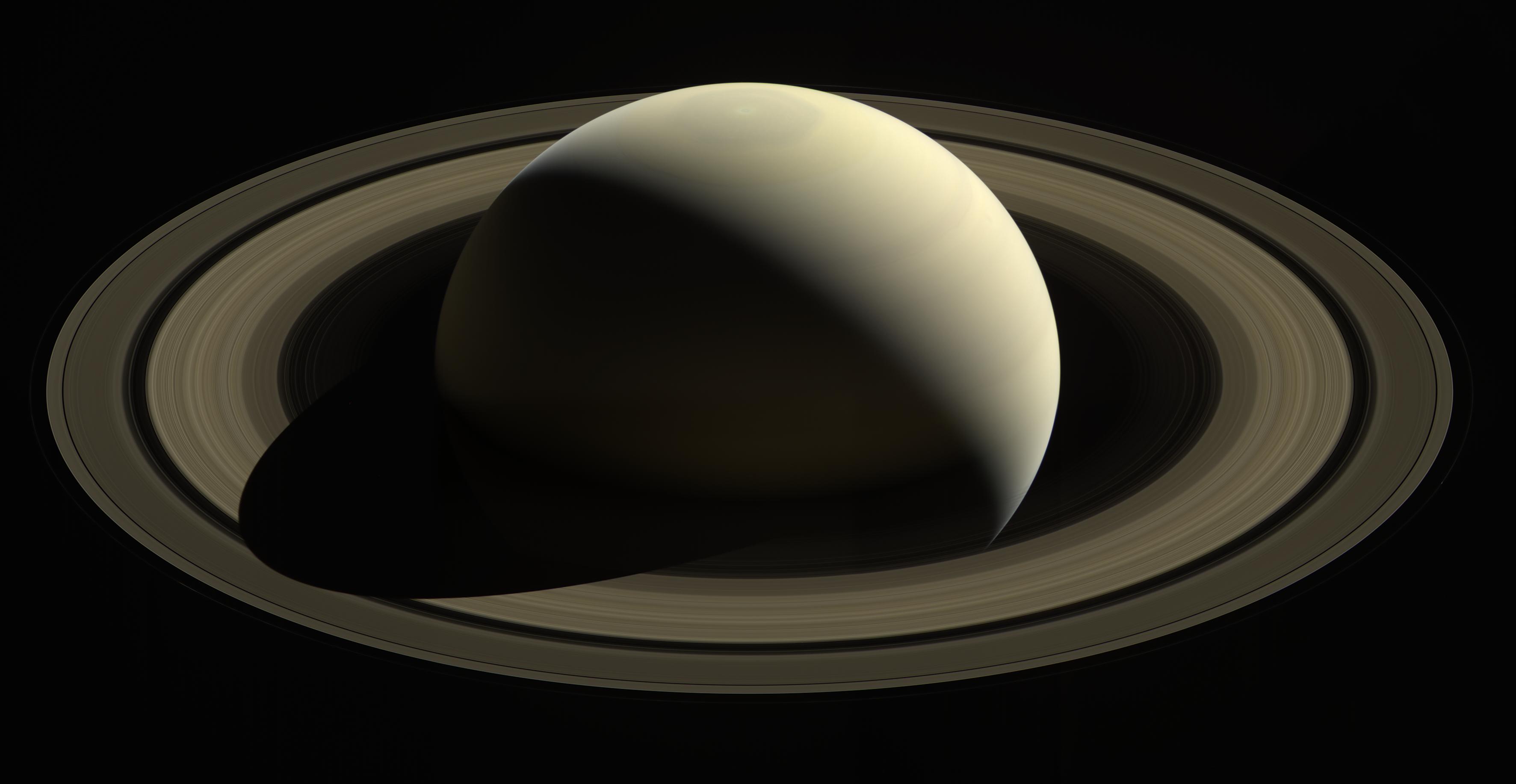
Saturn Facts
Saturn is the sixth planet from the Sun, and the second-largest planet in our solar system. Saturn is surrounded by a spectacular ring system, and it has dozens of moons.
Explore Saturn
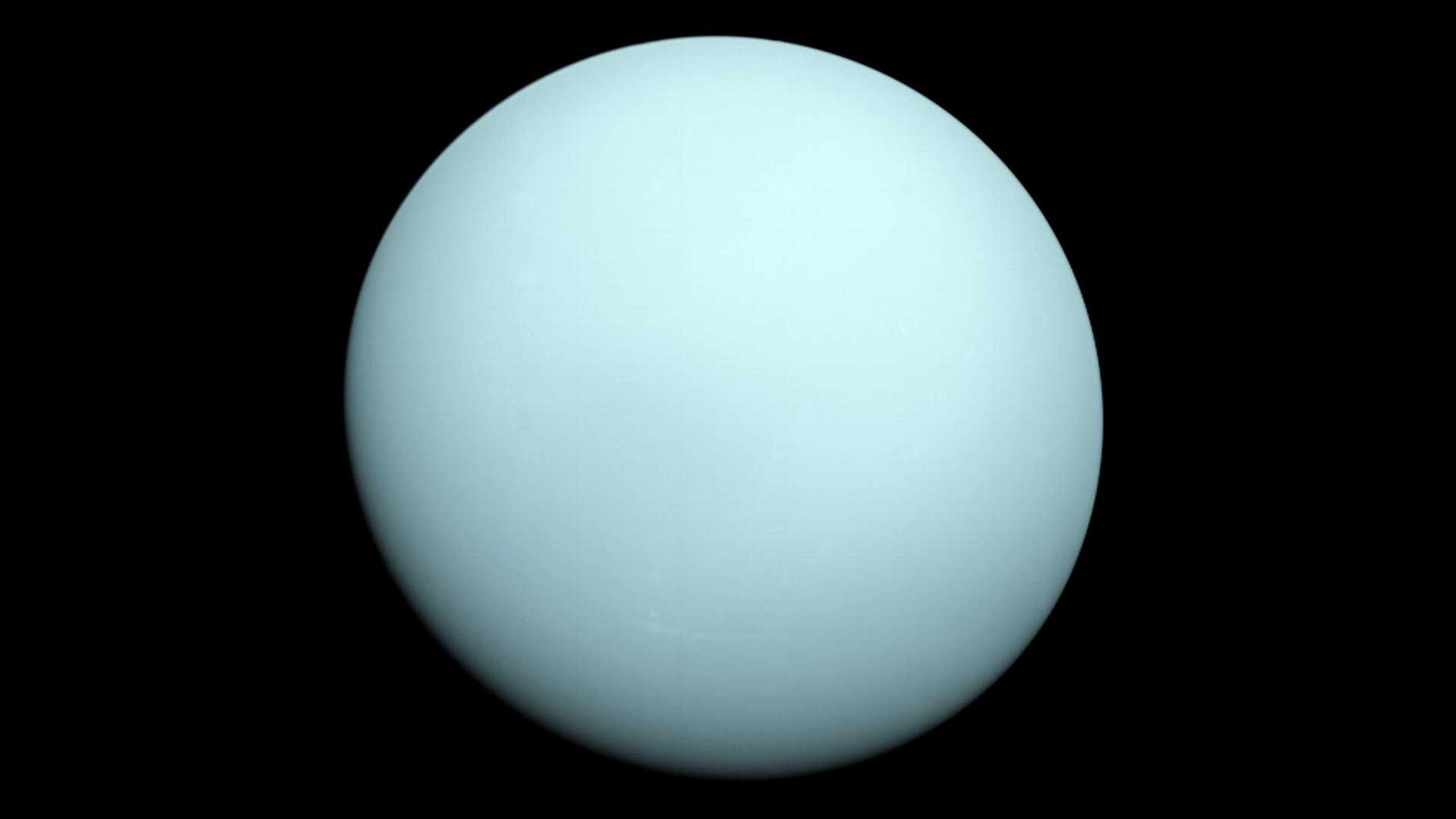
Uranus Facts
Uranus is the seventh planet from the Sun, and it has the third largest diameter of planets in our solar system. Uranus appears to spin sideways.
Explore Uranus
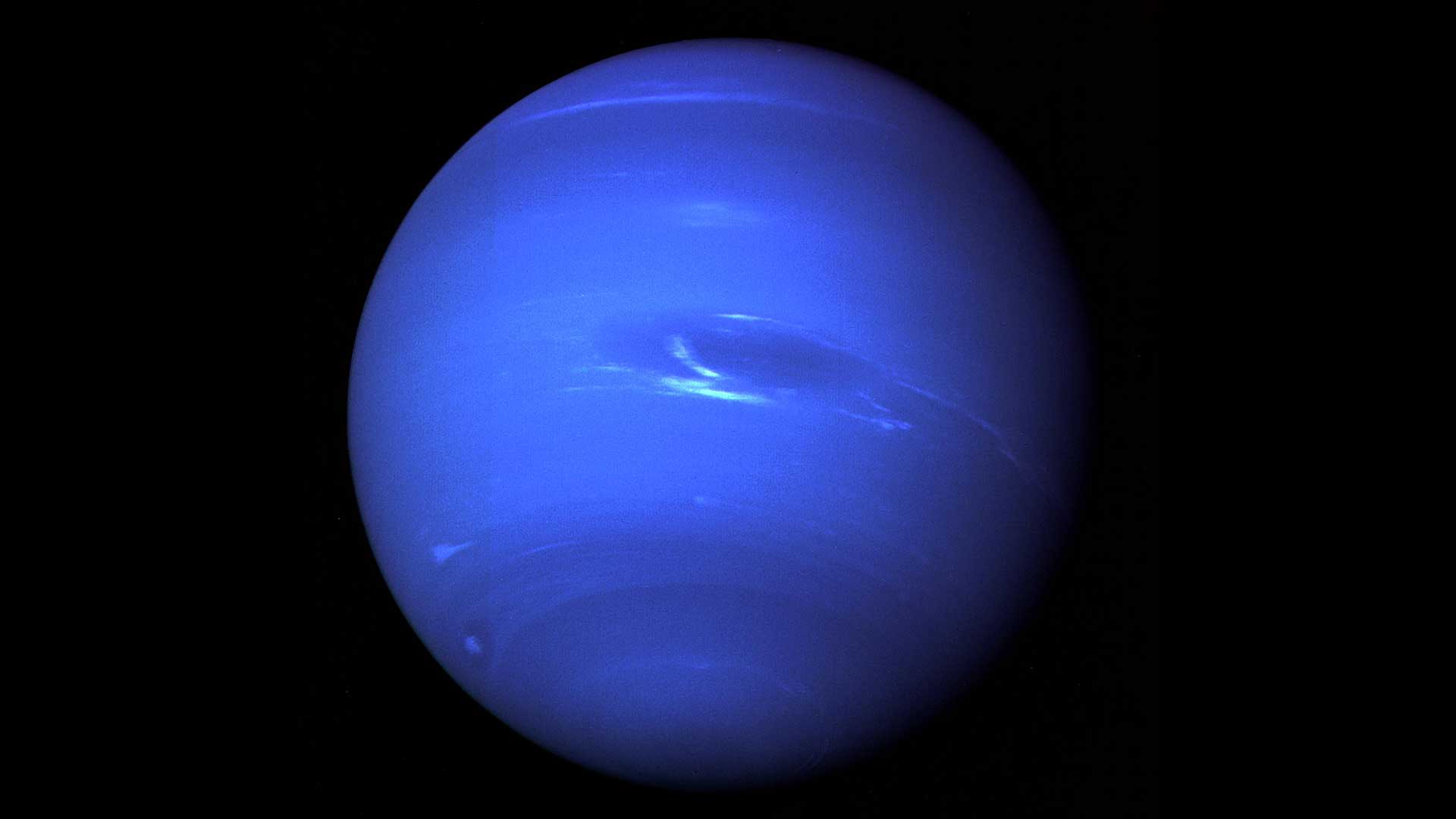
Neptune Facts
Neptune is the eighth and most distant planet in our solar system. Dark, cold, and whipped by supersonic winds, ice giant Neptune is more than 30 times as far from the Sun as Earth.
Explore Neptune
Dwarf Planet Facts
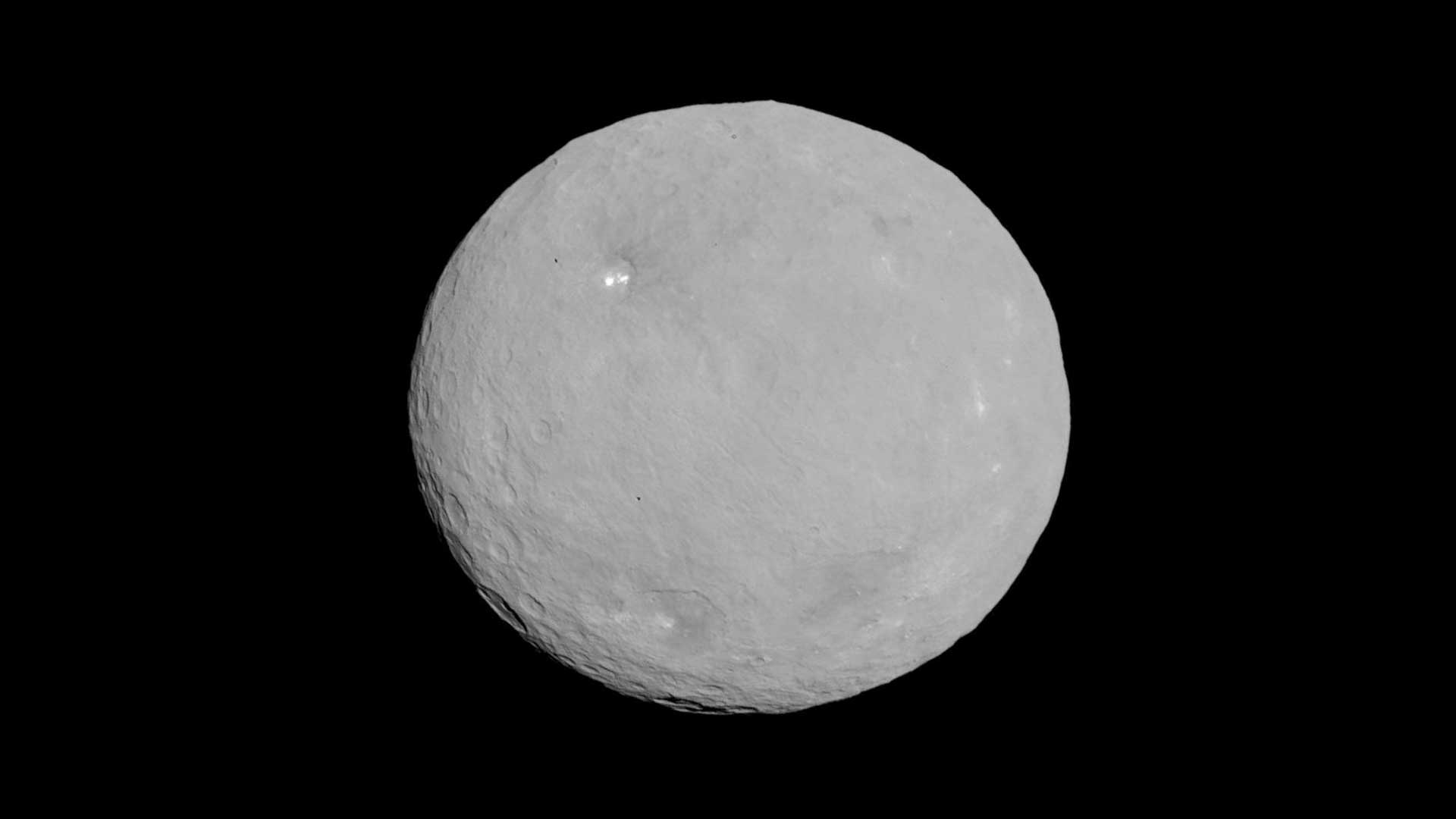
Ceres Facts
Dwarf planet Ceres is the largest object in the asteroid belt between Mars and Jupiter, and it's the only dwarf planet located in the inner solar system. When NASA's Dawn arrived in 2015, Ceres became the first dwarf planet to receive a visit from a spacecraft.
Explore Ceres
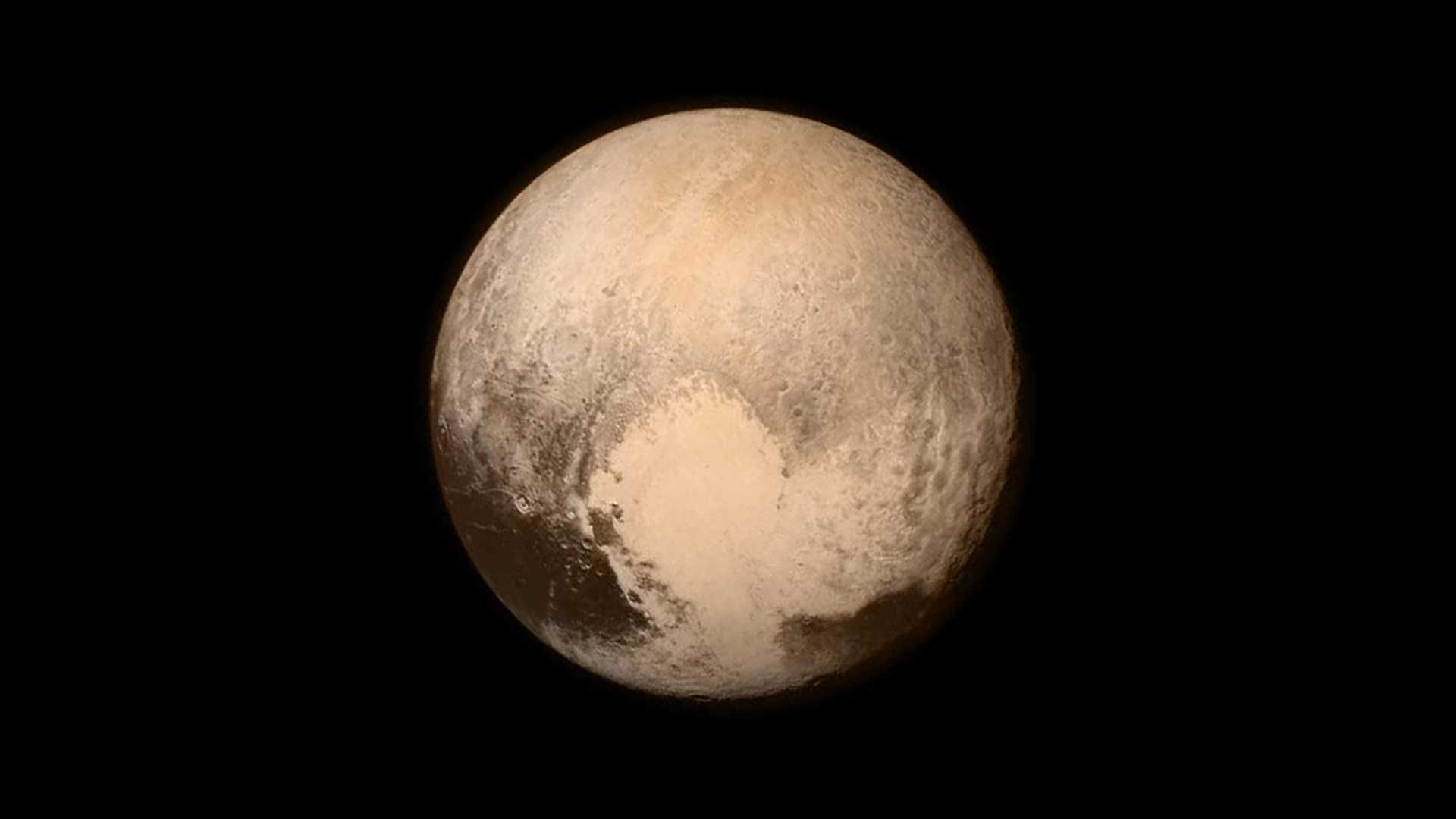
Pluto Facts
Pluto was long considered our solar system's ninth planet. But after the discovery of similar intriguing worlds deep in the Kuiper Belt, tiny Pluto was reclassified as a dwarf planet in 2006 by the International Astronomical Union.
Explore Pluto

Haumea Facts
Haumea was nicknamed Santa by one discovery team. It's oval-shaped, and is one of the fastest rotating large objects in our solar system. The fast spin distorts Haumea's shape, making this dwarf planet look like a football.
Explore Haumea
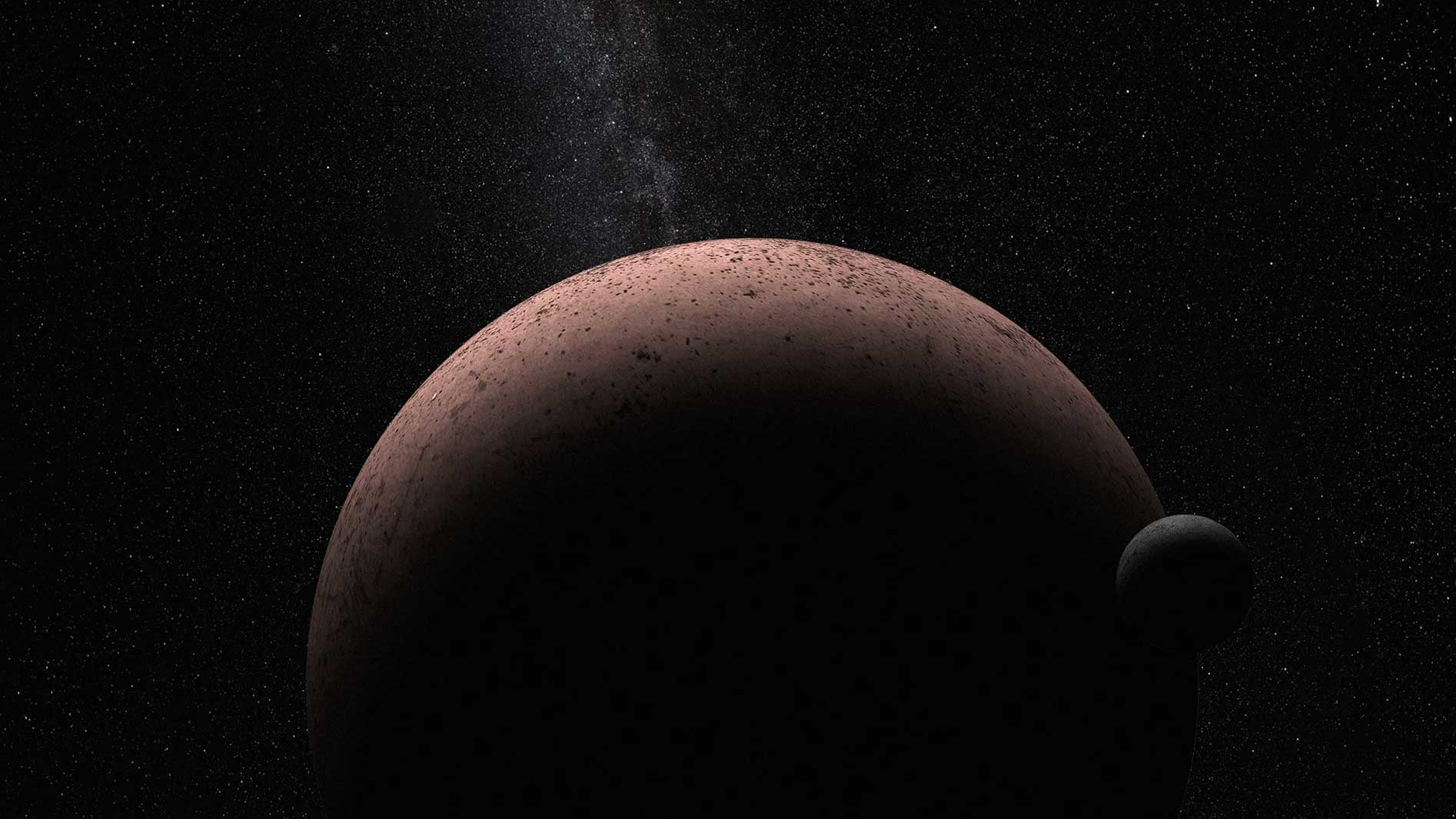
Makemake Facts
Makemake is slightly smaller than Pluto, and is the second-brightest object in the Kuiper Belt as seen from Earth while Pluto is the brightest.
Explore Makemake
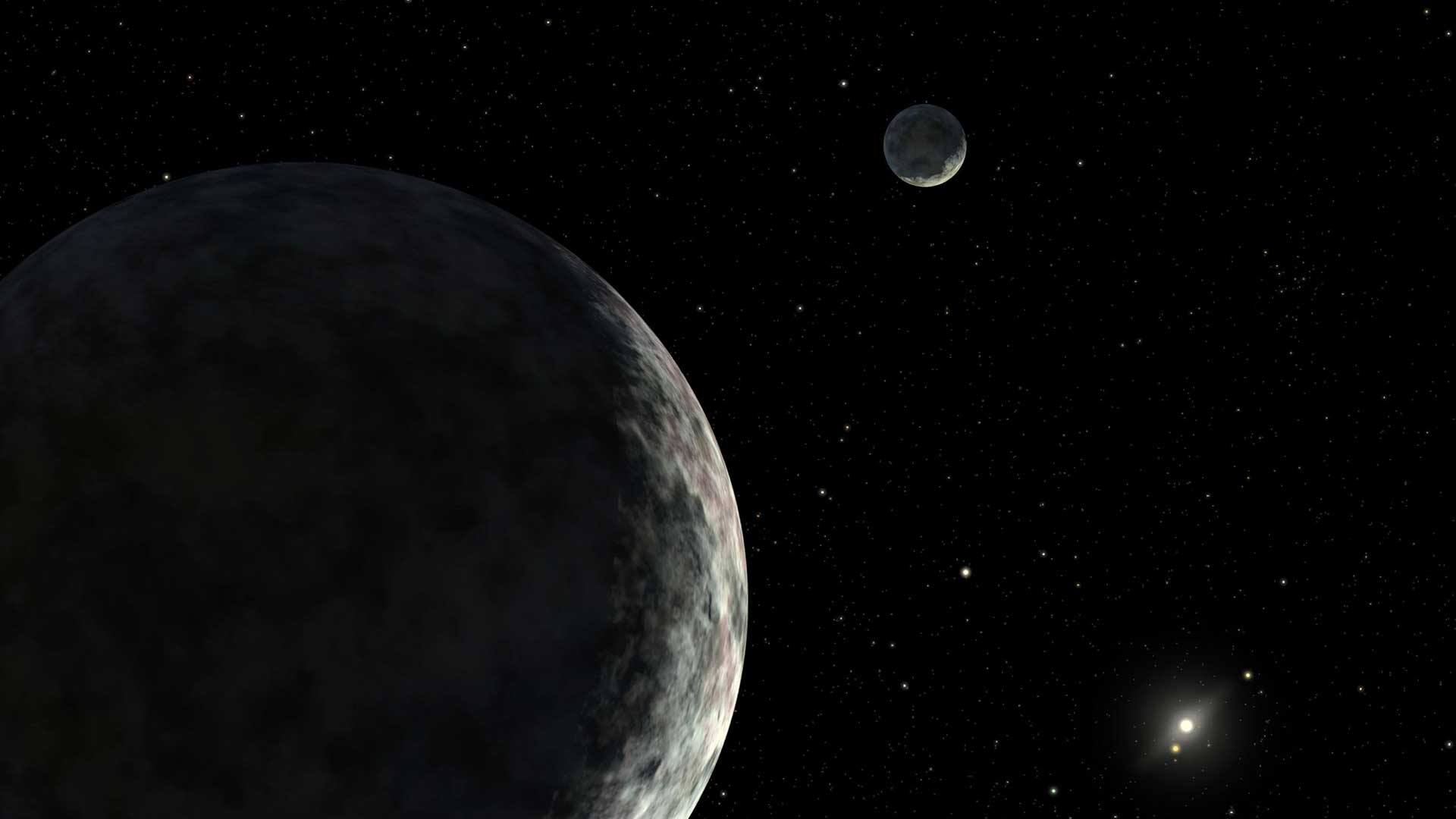
The discovery of Eris help trigger a debate in the scientific community that led to the International Astronomical Union's decision in 2006 to clarify the definition of a planet. Pluto, Eris, and other similar objects are now classified as dwarf planets.
Explore Eris
What is a Planet?
This seemingly simple question doesn't have a simple answer.
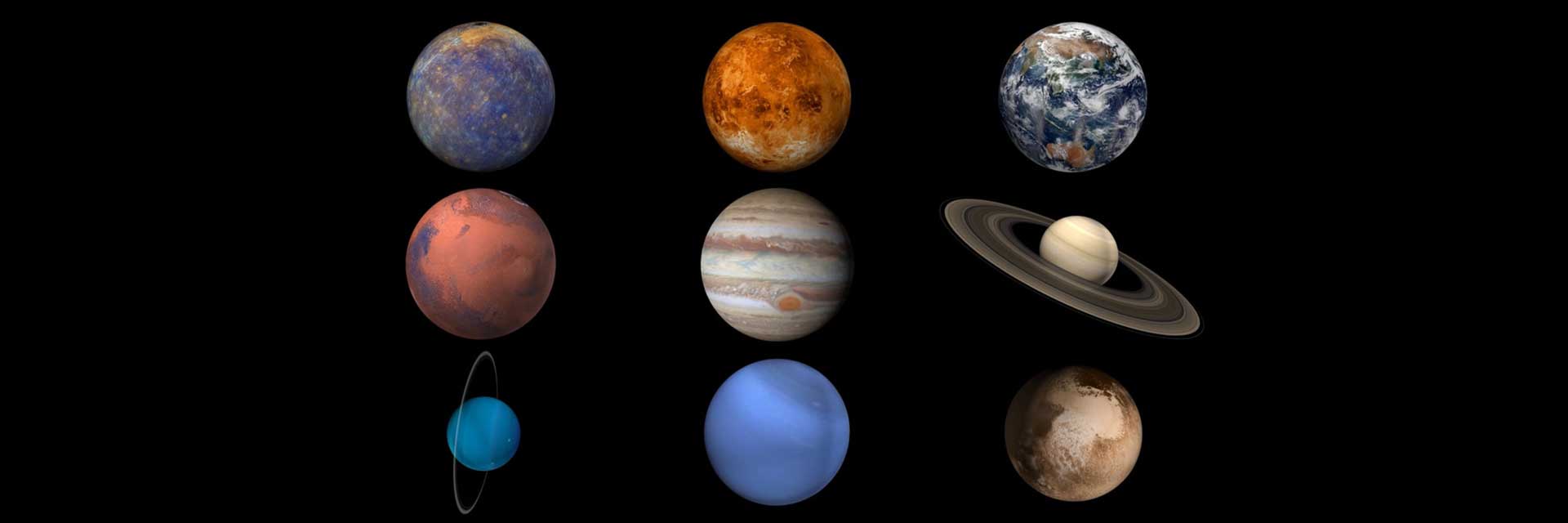
Is There Another Planet in the Solar System?
It's an intriguing idea that might explains some current mysteries, but direct evidence of another planet has yet to be found.
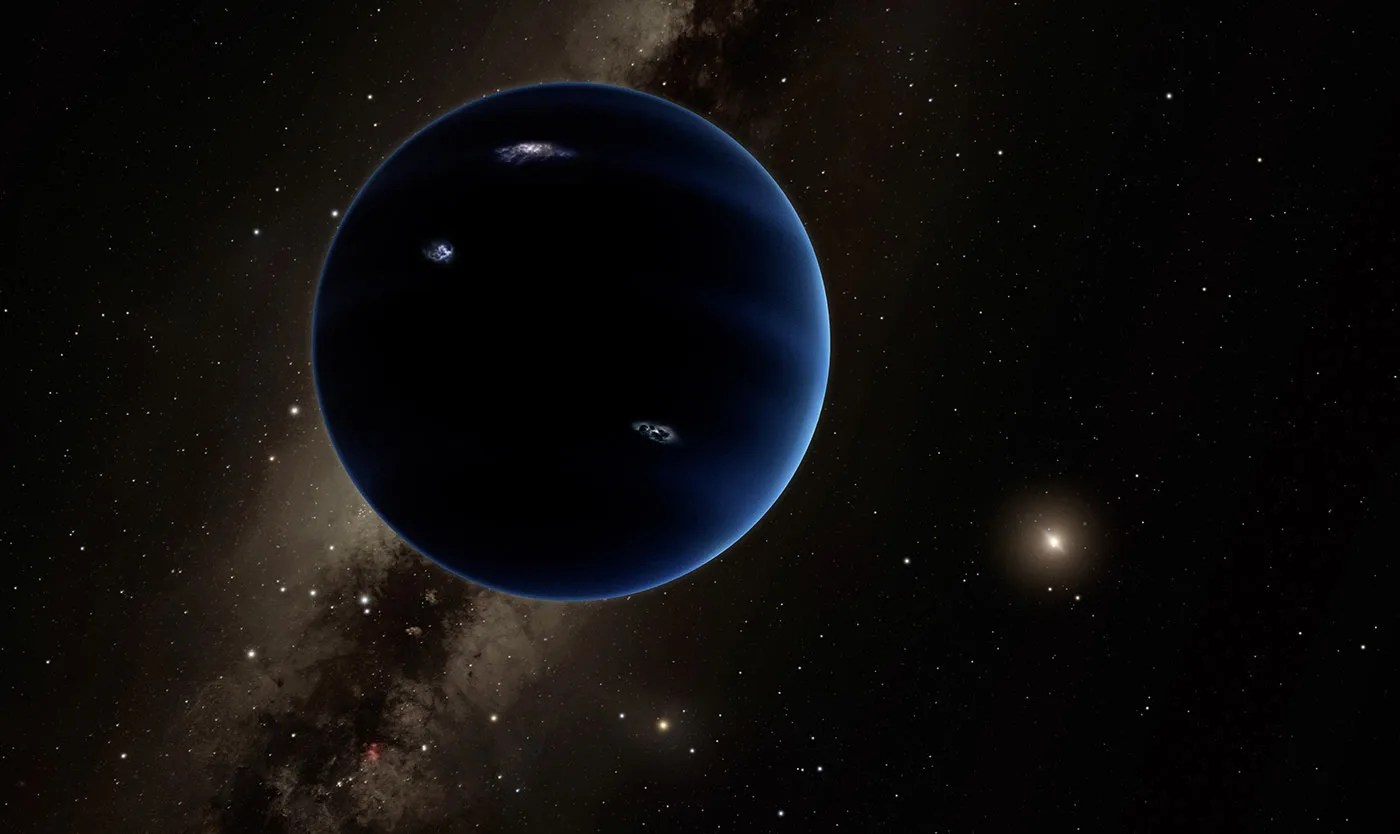
Planet Sizes and Locations in Our Solar System
Our solar system has eight planets, and five officially recognized dwarf planets. Which planet is biggest? Which is smallest? What…
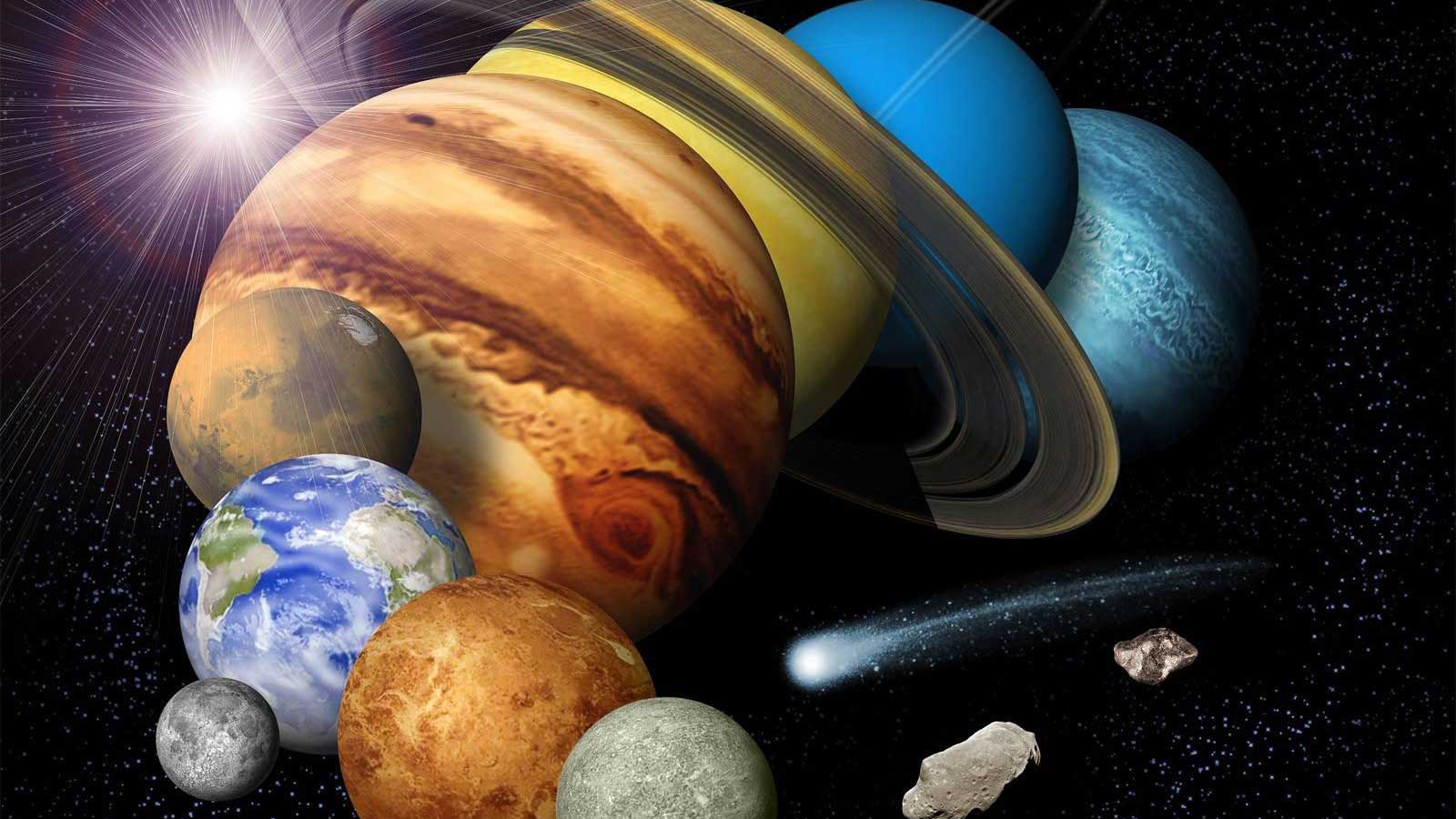
Discover More
Solar System Exploration

Kuiper Belt


Short Essay on Our Planet Earth [100, 200, 400 words] With PDF
Earth is the only planet that sustains life and ecosystems. In this lesson, you will learn to write essays in three different sets on the planet earth to help you in preparing for your upcoming examinations.

Short Essay on Our Planet Earth in 100 Words
Earth is a rare planet since it is the only one that can support life. On Earth, life is possible for various reasons, the most essential of which are the availability of water and the presence of oxygen. Earth is a member of the Solar System. The Earth, along with the other seven planets, orbits the Sun.
One spin takes approximately twenty-four hours, and one revolution takes 365 days and four hours. Day and night, as well as the changing of seasons, occurs due to rotation and revolution. However, we have jeopardized our planet by our sheer ignorance and negligence. We must practise conservation of resources and look after mother earth while we have time.
Short Essay on Our Planet Earth in 200 Words
Earth is a blue planet that is special from the rest of the planets because it is the only one to sustain life. The availability of water and oxygen are two of the most crucial factors that make life possible on Earth. The Earth rotates around the Sun, along with seven other planets in the solar system. It takes 24 hours to complete one rotation, and approximately 365 days and 4 hours to complete one revolution. Day and night, as well as changing seasons, are all conceivable due to these two movements.
However, we are wasting and taking advantage of the natural resources that have been bestowed upon us. Overuse and exploitation of all-natural resources produce pollution to such an alarming degree that life on Earth is on the verge of extinction. The depletion of the ozone layer has resulted in global warming. The melting of glaciers has resulted in rising temperatures.
Many animals have become extinct or are endangered. To protect the environment, we must work together. Conversation, resource reduction, reuse, and recycling will take us a long way toward restoring the natural ecosystem. We are as unique as our home planet. We have superior intelligence, which we must employ for the benefit of all living beings. The Earth is our natural home, and we must create a place that is as good as, if not better than, paradise.
Short Essay on Our Planet Earth in 400 Words
Earth is a unique planet as it is the only planet that sustains life. Life is possible on Earth because of many reasons, and the most important among them is the availability of water and oxygen. Earth is a part of the family of the Sun. It belongs to the Solar System.
Earth, along with seven other planets, revolves around the Sun. It takes roughly twenty-four hours to complete one rotation and 365 days and 4 hours to complete one revolution. Rotation and revolution make day and night and change of seasons simultaneously possible. The five seasons we experience in one revolution are Spring, Summer, Monsoon, Autumn, and Winter.
However, we are misusing resources and exploiting the natural gifts that have been so heavily endowed upon us. Overuse and misuse of all the natural resources are causing pollution to such an extent that it has become alarming to the point of destruction. The most common form of pollution caused upon the earth by us is Air Pollution, Land Pollution, Water Pollution, and Noise Pollution.
This, in turn, had resulted in Ozone Layer Depletion and Global Warming. Due to ozone layer depletion, there harmful ultraviolet rays of the sun are reaching the earth. It, in turn, is melting glaciers and causing a rise in temperature every year. Many animals have either extinct or are endangered due to human activities.
Some extinct animals worldwide are Sabre-toothed Cat, Woolly Mammoth, Dodo, Great Auk, Stellers Sea Cow, Tasmanian Tiger, Passenger Pigeon, Pyrenean Ibex. The extinct animals in the Indian subcontinent are the Indian Cheetah, pink-headed duck, northern Sumatran rhinoceros, and Sunderban dwarf rhinoceros.
The endangered animals that are in need of our immediate attention in India are Royal Bengal Tiger, Snow leopard, Red panda, Indian rhinoceros, Nilgiri tahr, Asiatic lion, Ganges river dolphin, Gharial and Hangul, among others. We have exploited fossil fuels to such an extent that now we run the risk of using them completely. We must switch to alternative sources of energy that are nature friendly. Solar power, windmills, hydra power should be used more often, and deforestation must be made illegal worldwide.
We must come together to preserve the natural environment. Conversation, reduction, reuse and recycling of the resources will take us a long way in rebuilding the natural habitat. We are as unique as our planet earth. We have higher intelligence, and we must use it for the well-being of all living organisms. The Earth is our natural abode, and we must make a place as close to Paradise, if not better.
Hopefully, after going through this lesson, you have a holistic idea about our planet Earth. I have tried to cover every aspect that makes it unique and the reasons to practise conversation of natural resources. If you still have any doubts regarding this session, kindly let me know through the comment section below. To read more such essays on many important topics, keep browsing our website.
Join us on Telegram to get the latest updates on our upcoming sessions. Thank you, see you again soon.
More from English Compositions
- 100, 200, 400 Words Paragraph and Short Essay [With PDF]
- Write a Letter to the Editor about Evoking Awareness for the Use of Solar Energy
- Short Essay on Moon [100, 200, 400 Words] With PDF
- Short Essay on Water [100, 200, 400 Words] With PDF
- Madhyamik English Writing Suggestion 2022 [With PDF]
- Short Essay on Water Conservation [100, 200, 400 Words] With PDF
- Short Essay on Space Travel [100, 200, 400 Words] With PDF
- Write a Letter to the Municipal Officer for Regular Water Supply
- Short Essay on River Pollution [100, 200, 400 Words] With PDF
- Write a Letter to the Editor Complaining about the Shortage of Water in Your Area [4 Examples]
- Write a Letter to the Editor about the Evils of the Dowry System
- Write a Letter to the Editor about the Rising Prices of Essential Commodities

Planet Earth, explained
Our home planet provides us with life and protects us from space.
Earth, our home planet, is a world unlike any other. The third planet from the sun, Earth is the only place in the known universe confirmed to host life.
With a radius of 3,959 miles, Earth is the fifth largest planet in our solar system, and it's the only one known for sure to have liquid water on its surface. Earth is also unique in terms of monikers. Every other solar system planet was named for a Greek or Roman deity, but for at least a thousand years, some cultures have described our world using the Germanic word “earth,” which means simply “the ground.”
Our dance around the sun
Earth orbits the sun once every 365.25 days. Since our calendar years have only 365 days, we add an extra leap day every four years to account for the difference.
Though we can't feel it, Earth zooms through its orbit at an average velocity of 18.5 miles a second. During this circuit, our planet is an average of 93 million miles away from the sun, a distance that takes light about eight minutes to traverse. Astronomers define this distance as one astronomical unit (AU), a measure that serves as a handy cosmic yardstick.
Earth rotates on its axis every 23.9 hours, defining day and night for surface dwellers. This axis of rotation is tilted 23.4 degrees away from the plane of Earth's orbit around the sun, giving us seasons. Whichever hemisphere is tilted closer to the sun experiences summer, while the hemisphere tilted away gets winter. In the spring and fall, each hemisphere receives similar amounts of light. On two specific dates each year—called the equinoxes—both hemispheres get illuminated equally.
Many layers, many features
About 4.5 billion years ago, gravity coaxed Earth to form from the gaseous, dusty disk that surrounded our young sun. Over time, Earth's interior—which is made mostly of silicate rocks and metals—differentiated into four layers.
FREE BONUS ISSUE
At the planet's heart lies the inner core, a solid sphere of iron and nickel that's 759 miles wide and as hot as 9,800 degrees Fahrenheit. The inner core is surrounded by the outer core, a 1,400-mile-thick band of iron and nickel fluids. Beyond the outer core lies the mantle, a 1,800-mile-thick layer of viscous molten rock on which Earth's outermost layer, the crust, rests. On land, the continental crust is an average of 19 miles thick, but the oceanic crust that forms the seafloor is thinner—about three miles thick—and denser.
Like Venus and Mars, Earth has mountains, valleys, and volcanoes. But unlike its rocky siblings, almost 70 percent of Earth's surface is covered in oceans of liquid water that average 2.5 miles deep. These bodies of water contain 97 percent of Earth's volcanoes and the mid-ocean ridge , a massive mountain range more than 40,000 miles long.
You May Also Like

4.5 billion years ago, another planet crashed into Earth. We may have found its leftovers.

The moon is even older than we thought

9 spectacular night sky events to see in 2024
Earth's crust and upper mantle are divided into massive plates that grind against each other in slow motion. As these plates collide, tear apart, or slide past each other, they give rise to our very active geology. Earthquakes rumble as these plates snag and slip past each other. Many volcanoes form as seafloor crust smashes into and slides beneath continental crust. When plates of continental crust collide, mountain ranges such as the Himalaya are pushed toward the skies.
Protective fields and gases
Earth's atmosphere is 78 percent nitrogen, 21 percent oxygen, and one percent other gases such as carbon dioxide, water vapor, and argon. Much like a greenhouse, this blanket of gases absorbs and retains heat. On average, Earth's surface temperature is about 57 degrees Fahrenheit; without our atmosphere, it'd be zero degrees . In the last two centuries, humans have added enough greenhouse gases to the atmosphere to raise Earth's average temperature by 1.8 degrees Fahrenheit . This extra heat has altered Earth's weather patterns in many ways .
The atmosphere not only nourishes life on Earth, but it also protects it: It's thick enough that many meteorites burn up before impact from friction, and its gases—such as ozone—block DNA-damaging ultraviolet light from reaching the surface. But for all that our atmosphere does, it's surprisingly thin. Ninety percent of Earth's atmosphere lies within just 10 miles of the planet's surface .

The silhouette of a woman is seen on a Norwegian island beneath the Northern Lights ( aurora borealis ).
We also enjoy protection from Earth's magnetic field, generated by our planet's rotation and its iron-nickel core. This teardrop-shaped field shields Earth from high-energy particles launched at us from the sun and elsewhere in the cosmos. But due to the field's structure, some particles get funneled to Earth's Poles and collide with our atmosphere, yielding aurorae, the natural fireworks show known by some as the northern lights.
Spaceship Earth
Earth is the planet we have the best opportunity to understand in detail—helping us see how other rocky planets behave, even those orbiting distant stars. As a result, scientists are increasingly monitoring Earth from space. NASA alone has dozens of missions dedicated to solving our planet's mysteries.
At the same time, telescopes are gazing outward to find other Earths. Thanks to instruments such as NASA's Kepler Space Telescope, astronomers have found more than 3,800 planets orbiting other stars, some of which are about the size of Earth , and a handful of which orbit in the zones around their stars that are just the right temperature to be potentially habitable. Other missions, such as the Transiting Exoplanet Survey Satellite, are poised to find even more.
Related Topics
- SCIENCE AND TECHNOLOGY
- SOLAR SYSTEM

Is there a 9th planet out there? We may soon find out.

Earth is a geological oddball in our solar system. This is why.

Did Pluto ever actually stop being a planet? Experts debate.

How did life on Earth begin? Here are 3 popular theories.

800,000 years ago, a huge meteorite hit Earth. Scientists may have just found where.
- Environment
- Perpetual Planet
History & Culture
- History & Culture
- Mind, Body, Wonder
- Paid Content
- Terms of Use
- Privacy Policy
- Your US State Privacy Rights
- Children's Online Privacy Policy
- Interest-Based Ads
- About Nielsen Measurement
- Do Not Sell or Share My Personal Information
- Nat Geo Home
- Attend a Live Event
- Book a Trip
- Inspire Your Kids
- Shop Nat Geo
- Visit the D.C. Museum
- Learn About Our Impact
- Support Our Mission
- Advertise With Us
- Customer Service
- Renew Subscription
- Manage Your Subscription
- Work at Nat Geo
- Sign Up for Our Newsletters
- Contribute to Protect the Planet
Copyright © 1996-2015 National Geographic Society Copyright © 2015-2024 National Geographic Partners, LLC. All rights reserved
- CBSE Class 10th
- CBSE Class 12th
- UP Board 10th
- UP Board 12th
- Bihar Board 10th
- Bihar Board 12th
- Top Schools in India
- Top Schools in Delhi
- Top Schools in Mumbai
- Top Schools in Chennai
- Top Schools in Hyderabad
- Top Schools in Kolkata
- Top Schools in Pune
- Top Schools in Bangalore
Products & Resources
- JEE Main Knockout April
- Free Sample Papers
- Free Ebooks
- NCERT Notes
- NCERT Syllabus
- NCERT Books
- RD Sharma Solutions
- Navodaya Vidyalaya Admission 2024-25
- NCERT Solutions
- NCERT Solutions for Class 12
- NCERT Solutions for Class 11
- NCERT solutions for Class 10
- NCERT solutions for Class 9
- NCERT solutions for Class 8
- NCERT Solutions for Class 7
- JEE Main 2024
- MHT CET 2024
- JEE Advanced 2024
- BITSAT 2024
- View All Engineering Exams
- Colleges Accepting B.Tech Applications
- Top Engineering Colleges in India
- Engineering Colleges in India
- Engineering Colleges in Tamil Nadu
- Engineering Colleges Accepting JEE Main
- Top IITs in India
- Top NITs in India
- Top IIITs in India
- JEE Main College Predictor
- JEE Main Rank Predictor
- MHT CET College Predictor
- AP EAMCET College Predictor
- GATE College Predictor
- KCET College Predictor
- JEE Advanced College Predictor
- View All College Predictors
- JEE Main Question Paper
- JEE Main Cutoff
- JEE Main Answer Key
- SRMJEEE Result
- Download E-Books and Sample Papers
- Compare Colleges
- B.Tech College Applications
- JEE Advanced Registration
- MAH MBA CET Exam
- View All Management Exams
Colleges & Courses
- MBA College Admissions
- MBA Colleges in India
- Top IIMs Colleges in India
- Top Online MBA Colleges in India
- MBA Colleges Accepting XAT Score
- BBA Colleges in India
- XAT College Predictor 2024
- SNAP College Predictor
- NMAT College Predictor
- MAT College Predictor 2024
- CMAT College Predictor 2024
- CAT Percentile Predictor 2023
- CAT 2023 College Predictor
- CMAT 2024 Registration
- TS ICET 2024 Registration
- CMAT Exam Date 2024
- MAH MBA CET Cutoff 2024
- Download Helpful Ebooks
- List of Popular Branches
- QnA - Get answers to your doubts
- IIM Fees Structure
- AIIMS Nursing
- Top Medical Colleges in India
- Top Medical Colleges in India accepting NEET Score
- Medical Colleges accepting NEET
- List of Medical Colleges in India
- List of AIIMS Colleges In India
- Medical Colleges in Maharashtra
- Medical Colleges in India Accepting NEET PG
- NEET College Predictor
- NEET PG College Predictor
- NEET MDS College Predictor
- DNB CET College Predictor
- DNB PDCET College Predictor
- NEET Application Form 2024
- NEET PG Application Form 2024
- NEET Cut off
- NEET Online Preparation
- Download Helpful E-books
- LSAT India 2024
- Colleges Accepting Admissions
- Top Law Colleges in India
- Law College Accepting CLAT Score
- List of Law Colleges in India
- Top Law Colleges in Delhi
- Top Law Collages in Indore
- Top Law Colleges in Chandigarh
- Top Law Collages in Lucknow
Predictors & E-Books
- CLAT College Predictor
- MHCET Law ( 5 Year L.L.B) College Predictor
- AILET College Predictor
- Sample Papers
- Compare Law Collages
- Careers360 Youtube Channel
- CLAT Syllabus 2025
- CLAT Previous Year Question Paper
- AIBE 18 Result 2023
- NID DAT Exam
- Pearl Academy Exam
Predictors & Articles
- NIFT College Predictor
- UCEED College Predictor
- NID DAT College Predictor
- NID DAT Syllabus 2025
- NID DAT 2025
- Design Colleges in India
- Fashion Design Colleges in India
- Top Interior Design Colleges in India
- Top Graphic Designing Colleges in India
- Fashion Design Colleges in Delhi
- Fashion Design Colleges in Mumbai
- Fashion Design Colleges in Bangalore
- Top Interior Design Colleges in Bangalore
- NIFT Result 2024
- NIFT Fees Structure
- NIFT Syllabus 2025
- Free Design E-books
- List of Branches
- Careers360 Youtube channel
- IPU CET BJMC
- JMI Mass Communication Entrance Exam
- IIMC Entrance Exam
- Media & Journalism colleges in Delhi
- Media & Journalism colleges in Bangalore
- Media & Journalism colleges in Mumbai
- List of Media & Journalism Colleges in India
- CA Intermediate
- CA Foundation
- CS Executive
- CS Professional
- Difference between CA and CS
- Difference between CA and CMA
- CA Full form
- CMA Full form
- CS Full form
- CA Salary In India
Top Courses & Careers
- Bachelor of Commerce (B.Com)
- Master of Commerce (M.Com)
- Company Secretary
- Cost Accountant
- Charted Accountant
- Credit Manager
- Financial Advisor
- Top Commerce Colleges in India
- Top Government Commerce Colleges in India
- Top Private Commerce Colleges in India
- Top M.Com Colleges in Mumbai
- Top B.Com Colleges in India
- IT Colleges in Tamil Nadu
- IT Colleges in Uttar Pradesh
- MCA Colleges in India
- BCA Colleges in India
Quick Links
- Information Technology Courses
- Programming Courses
- Web Development Courses
- Data Analytics Courses
- Big Data Analytics Courses
- RUHS Pharmacy Admission Test
- Top Pharmacy Colleges in India
- Pharmacy Colleges in Pune
- Pharmacy Colleges in Mumbai
- Colleges Accepting GPAT Score
- Pharmacy Colleges in Lucknow
- List of Pharmacy Colleges in Nagpur
- GPAT Result
- GPAT 2024 Admit Card
- GPAT Question Papers
- NCHMCT JEE 2024
- Mah BHMCT CET
- Top Hotel Management Colleges in Delhi
- Top Hotel Management Colleges in Hyderabad
- Top Hotel Management Colleges in Mumbai
- Top Hotel Management Colleges in Tamil Nadu
- Top Hotel Management Colleges in Maharashtra
- B.Sc Hotel Management
- Hotel Management
- Diploma in Hotel Management and Catering Technology
Diploma Colleges
- Top Diploma Colleges in Maharashtra
- UPSC IAS 2024
- SSC CGL 2024
- IBPS RRB 2024
- Previous Year Sample Papers
- Free Competition E-books
- Sarkari Result
- QnA- Get your doubts answered
- UPSC Previous Year Sample Papers
- CTET Previous Year Sample Papers
- SBI Clerk Previous Year Sample Papers
- NDA Previous Year Sample Papers
Upcoming Events
- NDA Application Form 2024
- UPSC IAS Application Form 2024
- CDS Application Form 2024
- CTET Admit card 2024
- HP TET Result 2023
- SSC GD Constable Admit Card 2024
- UPTET Notification 2024
- SBI Clerk Result 2024
Other Exams
- SSC CHSL 2024
- UP PCS 2024
- UGC NET 2024
- RRB NTPC 2024
- IBPS PO 2024
- IBPS Clerk 2024
- IBPS SO 2024
- Top University in USA
- Top University in Canada
- Top University in Ireland
- Top Universities in UK
- Top Universities in Australia
- Best MBA Colleges in Abroad
- Business Management Studies Colleges
Top Countries
- Study in USA
- Study in UK
- Study in Canada
- Study in Australia
- Study in Ireland
- Study in Germany
- Study in China
- Study in Europe
Student Visas
- Student Visa Canada
- Student Visa UK
- Student Visa USA
- Student Visa Australia
- Student Visa Germany
- Student Visa New Zealand
- Student Visa Ireland
- CUET PG 2024
- IGNOU B.Ed Admission 2024
- DU Admission 2024
- UP B.Ed JEE 2024
- LPU NEST 2024
- IIT JAM 2024
- IGNOU Online Admission 2024
- Universities in India
- Top Universities in India 2024
- Top Colleges in India
- Top Universities in Uttar Pradesh 2024
- Top Universities in Bihar
- Top Universities in Madhya Pradesh 2024
- Top Universities in Tamil Nadu 2024
- Central Universities in India
- CUET Exam City Intimation Slip 2024
- IGNOU Date Sheet
- CUET Mock Test 2024
- CUET Admit card 2024
- CUET PG Syllabus 2024
- CUET Participating Universities 2024
- CUET Previous Year Question Paper
- CUET Syllabus 2024 for Science Students
- E-Books and Sample Papers
- CUET Exam Pattern 2024
- CUET Exam Date 2024
- CUET Syllabus 2024
- IGNOU Exam Form 2024
- IGNOU Result
- CUET Courses List 2024
Engineering Preparation
- Knockout JEE Main 2024
- Test Series JEE Main 2024
- JEE Main 2024 Rank Booster
Medical Preparation
- Knockout NEET 2024
- Test Series NEET 2024
- Rank Booster NEET 2024
Online Courses
- JEE Main One Month Course
- NEET One Month Course
- IBSAT Free Mock Tests
- IIT JEE Foundation Course
- Knockout BITSAT 2024
- Career Guidance Tool
Top Streams
- IT & Software Certification Courses
- Engineering and Architecture Certification Courses
- Programming And Development Certification Courses
- Business and Management Certification Courses
- Marketing Certification Courses
- Health and Fitness Certification Courses
- Design Certification Courses
Specializations
- Digital Marketing Certification Courses
- Cyber Security Certification Courses
- Artificial Intelligence Certification Courses
- Business Analytics Certification Courses
- Data Science Certification Courses
- Cloud Computing Certification Courses
- Machine Learning Certification Courses
- View All Certification Courses
- UG Degree Courses
- PG Degree Courses
- Short Term Courses
- Free Courses
- Online Degrees and Diplomas
- Compare Courses
Top Providers
- Coursera Courses
- Udemy Courses
- Edx Courses
- Swayam Courses
- upGrad Courses
- Simplilearn Courses
- Great Learning Courses
Essay on Solar System
We see the sun every day shining in the sky and at night, we see the moon. Many other heavy bodies like satellites, meteoroids, and asteroids not visible to our naked eyes also make up the solar system. The sun and its planets together form the Solar System. The existence of the Solar System is about 4.6 billion years old.
100 Words Essay on The Solar System
200 words essay on the solar system, 500 words essay on the solar system.

The solar system comprises all the planets that revolve around the sun. The solar system also contains moons, asteroids, comets, minor planets, and different types of gases and dust.
The planets are categorised into two categories: internal planets and outer planets. Mercury, Venus, Earth, Mars, Jupyter, Saturn, Uranus, and Neptune are called inner planets . Earlier, there were nine planets considered till 2006, but now, Pluto does not lie in the list of planets, it does not meet the standard set for the planets.
It is now termed a dwarf planet. In our solar system, the earth is the only planet where life exists. There are many solar systems that exist in the universe, it is more than 500. Our solar system includes the Kuiper belt that lies past Neptune’s orbit.
The Sun is a star that is made up of massive hot gas that gives us heat and light . The Sun is the focal point of the solar system, every substance in the solar system revolves around the Sun. There are eight planets in the solar system, Mercury is the closest planet to the Sun and the smallest planet in the solar system whereas Neptune is the farthest one and Jupiter is the biggest planet in the solar system.
Only Earth has a supportive environment for living creatures. The Earth rotates around its own axis and revolves around the Sun, similarly the moon orbits around the Earth. For complete rotation the earth takes one day and for completing one cycle around the sun it takes 365 days. It is what we call one year and due to gravity we all are stuck to the surface of the Earth.
A Comet is a large body in space made of rocks, ice, and frozen gas. The centre of a comet is called the nucleus. Asteroids are also large bodies in space made of rocks and minerals, they mostly orbit the sun between Mars and Jupiter in an area called the Asteroid Belt.
The solar system comprises eight planets, about 170 natural planetary satellites, and uncountable asteroids, meteorites, and comets. The solar system is situated within the Orion-Cygnus arm of the Milky way galaxy . Alpha Centauri made up of the stars Proxima Centauri, Alpha Centauri A, and Alpha Centauri B are the closest star systems to the solar system. The sun which is located at the centre of the solar system affects the motion of the body through its gravitational force. It contains more than 99% mass of the system.
Planets and Their Moons
Mercury | Mercury is the closest and smallest plate in the solar system, it orbits around the Sun and takes 87.97 earth days, it spins around slowly compared to Earth and it is slightly bigger than earth. It has a solid surface that is covered with craters and has a thin surface.
Venus | Venus is the second closest planet to the Sun. Venus is very similar to the earth in shape and densityVenus is the hottest planet in the solar system, it has a thick and toxic atmosphere covered with carbon dioxide and sulfuric acid in the form of yellowish clouds, and trapped heat.
Earth | Earth is the only planet that has a livable environment that sustains life and the ecosystem. It is the third closest and fifth largest planet in the solar system. On earth, life is possible for various reasons, but the most essential thing is the availability of water and the presence of oxygen. Earth is also known as the ‘Blue Planet’ because 71% of the earth’s surface is covered with seas, oceans, and large rivers of water
Mars | Mars is the fourth planet from the sun in the solar system. It appears as a red, orange, and radish ball because of the presence of iron oxide which is why Mars is also known as the ‘Red Planet’. Mars is positioned just next to the Earth. The evidence of water and oxygen raised hopes about the possibility of life on Mars.
Jupiter | Jupiter is the largest planet in the solar system and the first of the four gas giants. It is the fifth planet from the Sun. Jupiter also has a ring system like all the large gas planets, although these rings are not famous or as visible as Saturn’s ring.
Saturn | Saturn is the second largest and least dense planet in the solar system. Saturn can float in water because Saturn is made of gases, it's a gas giant with an average radius of about nine and a half times that of earth. Saturn has rings that are made of gas and dust.
Uranus | Uranus is the coldest planet in the solar system, it revolves around the sun and takes 84 earth years to complete one rotation around the earth. Uranus is called an ‘Ice Giant’ planet because it is covered with ice and Hydrogen gas.
Neptune | Neptune is the eighth planet and farthest planet from the sun in the solar system, its atmosphere is made of hydrogen, helium, and methane gas. Neptune is a dark, cold, and very windy planet in the solar system.
Applications for Admissions are open.

JEE Main Important Physics formulas
As per latest 2024 syllabus. Physics formulas, equations, & laws of class 11 & 12th chapters

UPES School of Liberal Studies
Ranked #52 Among Universities in India by NIRF | Up to 30% Merit-based Scholarships | Lifetime placement assistance | Last Date to Apply - 30th April

Aakash iACST Scholarship Test 2024
Get up to 90% scholarship on NEET, JEE & Foundation courses

JEE Main Important Chemistry formulas
As per latest 2024 syllabus. Chemistry formulas, equations, & laws of class 11 & 12th chapters

PACE IIT & Medical, Financial District, Hyd
Enrol in PACE IIT & Medical, Financial District, Hyd for JEE/NEET preparation

ALLEN JEE Exam Prep
Start your JEE preparation with ALLEN
Download Careers360 App's
Regular exam updates, QnA, Predictors, College Applications & E-books now on your Mobile
Certifications

We Appeared in

Scientific researchers on a bat-collecting expedition in Sierra Leone. Photo by Simon Townley/Panos
There’s no planet B
The scientific evidence is clear: the only celestial body that can support us is the one we evolved with. here’s why.
by Arwen E Nicholson & Raphaëlle D Haywood + BIO
At the start of the 22nd century, humanity left Earth for the stars. The enormous ecological and climatic devastation that had characterised the last 100 years had led to a world barren and inhospitable; we had used up Earth entirely. Rapid melting of ice caused the seas to rise, swallowing cities whole. Deforestation ravaged forests around the globe, causing widespread destruction and loss of life. All the while, we continued to burn the fossil fuels we knew to be poisoning us, and thus created a world no longer fit for our survival. And so we set our sights beyond Earth’s horizons to a new world, a place to begin again on a planet as yet untouched. But where are we going? What are our chances of finding the elusive planet B, an Earth-like world ready and waiting to welcome and shelter humanity from the chaos we created on the planet that brought us into being? We built powerful astronomical telescopes to search the skies for planets resembling our own, and very quickly found hundreds of Earth twins orbiting distant stars. Our home was not so unique after all. The universe is full of Earths!
This futuristic dream-like scenario is being sold to us as a real scientific possibility, with billionaires planning to move humanity to Mars in the near future. For decades, children have grown up with the daring movie adventures of intergalactic explorers and the untold habitable worlds they find. Many of the highest-grossing films are set on fictional planets, with paid advisors keeping the science ‘realistic’. At the same time, narratives of humans trying to survive on a post-apocalyptic Earth have also become mainstream.
Given all our technological advances, it’s tempting to believe we are approaching an age of interplanetary colonisation. But can we really leave Earth and all our worries behind? No. All these stories are missing what makes a planet habitable to us . What Earth-like means in astronomy textbooks and what it means to someone considering their survival prospects on a distant world are two vastly different things. We don’t just need a planet roughly the same size and temperature as Earth; we need a planet that spent billions of years evolving with us. We depend completely on the billions of other living organisms that make up Earth’s biosphere. Without them, we cannot survive. Astronomical observations and Earth’s geological record are clear: the only planet that can support us is the one we evolved with. There is no plan B. There is no planet B. Our future is here, and it doesn’t have to mean we’re doomed.
D eep down, we know this from instinct: we are happiest when immersed in our natural environment. There are countless examples of the healing power of spending time in nature . Numerous articles speak of the benefits of ‘forest bathing’; spending time in the woods has been scientifically shown to reduce stress, anxiety and depression, and to improve sleep quality, thus nurturing both our physical and mental health. Our bodies instinctively know what we need: the thriving and unique biosphere that we have co-evolved with, that exists only here, on our home planet.
There is no planet B. These days, everyone is throwing around this catchy slogan. Most of us have seen it inscribed on an activist’s homemade placard, or heard it from a world leader. In 2014, the United Nations’ then secretary general Ban Ki-moon said: ‘There is no plan B because we do not have [a] planet B.’ The French president Emmanuel Macron echoed him in 2018 in his historical address to US Congress. There’s even a book named after it. The slogan gives strong impetus to address our planetary crisis. However, no one actually explains why there isn’t another planet we could live on, even though the evidence from Earth sciences and astronomy is clear. Gathering this observation-based information is essential to counter an increasingly popular but flawed narrative that the only way to ensure our survival is to colonise other planets.
The best-case scenario for terraforming Mars leaves us with an atmosphere we are incapable of breathing
The most common target of such speculative dreaming is our neighbour Mars. It is about half the size of Earth and receives about 40 per cent of the heat that we get from the Sun. From an astronomer’s perspective, Mars is Earth’s identical twin. And Mars has been in the news a lot lately, promoted as a possible outpost for humanity in the near future . While human-led missions to Mars seem likely in the coming decades, what are our prospects of long-term habitation on Mars? Present-day Mars is a cold, dry world with a very thin atmosphere and global dust storms that can last for weeks on end. Its average surface pressure is less than 1 per cent of Earth’s. Surviving without a pressure suit in such an environment is impossible. The dusty air mostly consists of carbon dioxide (CO 2 ) and the surface temperature ranges from a balmy 30ºC (86ºF) in the summer, down to -140ºC (-220ºF) in the winter; these extreme temperature changes are due to the thin atmosphere on Mars.
Despite these clear challenges, proposals for terraforming Mars into a world suitable for long-term human habitation abound. Mars is further from the Sun than Earth, so it would require significantly more greenhouse gases to achieve a temperature similar to Earth’s. Thickening the atmosphere by releasing CO 2 in the Martian surface is the most popular ‘solution’ to the thin atmosphere on Mars. However, every suggested method of releasing the carbon stored in Mars requires technology and resources far beyond what we are currently capable of. What’s more, a recent NASA study determined that there isn’t even enough CO 2 on Mars to warm it sufficiently.
Even if we could find enough CO 2 , we would still be left with an atmosphere we couldn’t breathe. Earth’s atmosphere contains only 0.04 per cent CO 2 , and we cannot tolerate an atmosphere high in CO 2 . For an atmosphere with Earth’s atmospheric pressure, CO 2 levels as high as 1 per cent can cause drowsiness in humans, and once we reach levels of 10 per cent CO 2 , we will suffocate even if there is abundant oxygen. The proposed absolute best-case scenario for terraforming Mars leaves us with an atmosphere we are incapable of breathing; and achieving it is well beyond our current technological and economic capabilities.
Instead of changing the atmosphere of Mars, a more realistic scenario might be to build habitat domes on its surface with internal conditions suitable for our survival. However, there would be a large pressure difference between the inside of the habitat and the outside atmosphere. Any breach in the habitat would rapidly lead to depressurisation as the breathable air escapes into the thin Martian atmosphere. Any humans living on Mars would have to be on constant high alert for any damage to their building structures, and suffocation would be a daily threat.
F rom an astronomical perspective, Mars is Earth’s twin; and yet, it would take vast resources, time and effort to transform it into a world that wouldn’t be capable of providing even the bare minimum of what we have on Earth. Suggesting that another planet could become an escape from our problems on Earth suddenly seems absurd. But are we being pessimistic? Do we just need to look further afield?
Next time you are out on a clear night, look up at the stars and choose one – you are more likely than not to pick one that hosts planets. Astronomical observations today confirm our age-old suspicion that all stars have their own planetary systems. As astronomers, we call these exoplanets. What are exoplanets like? Could we make any of them our home?
The majority of exoplanets discovered to date were found by NASA’s Kepler mission, which monitored the brightness of 100,000 stars over four years, looking for dips in a star’s light as a planet obscures it each time it completes an orbit around it.
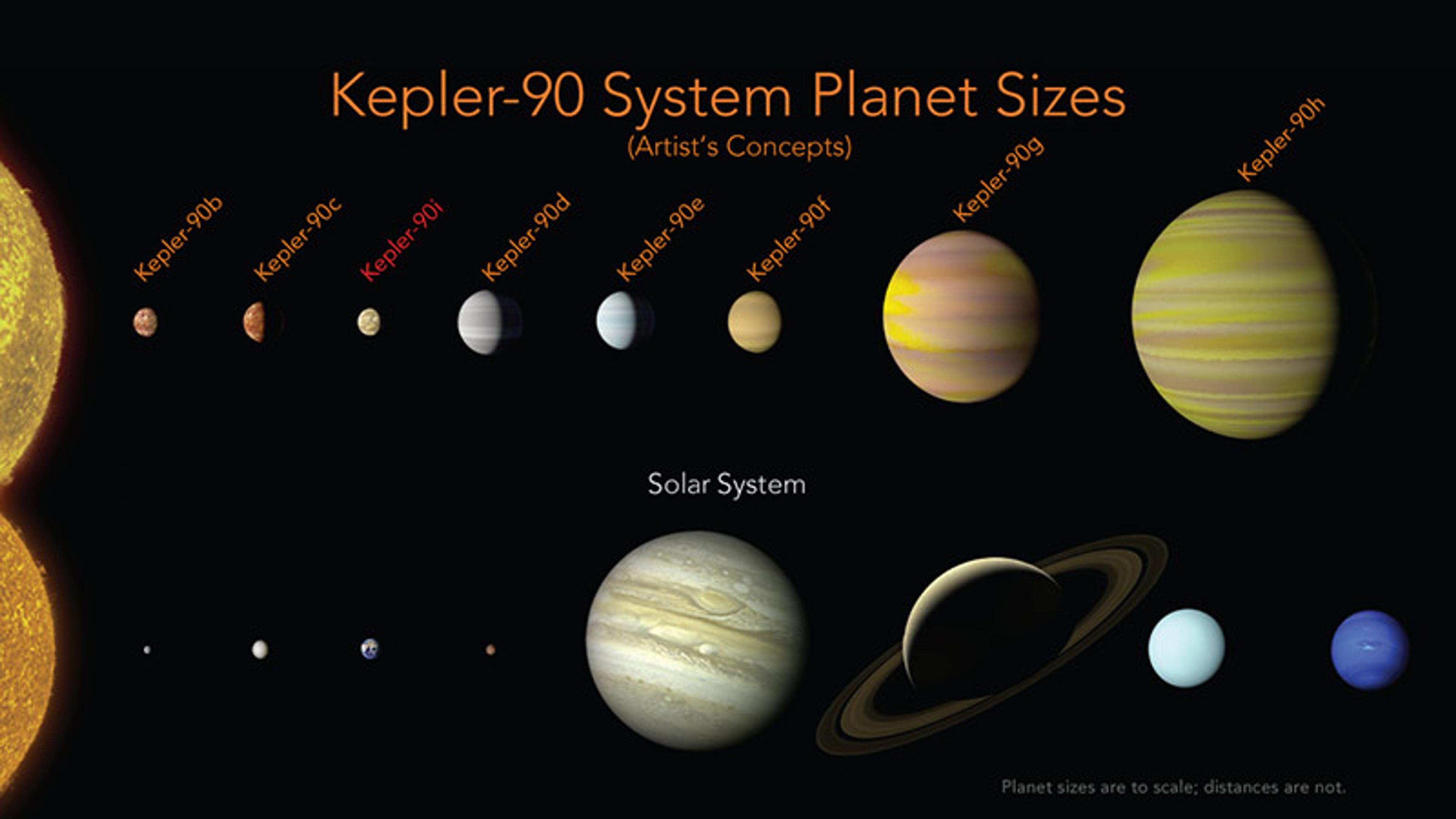
Kepler observed more than 900 Earth-sized planets with a radius up to 1.25 times that of our world. These planets could be rocky (for the majority of them, we haven’t yet determined their mass, so we can only make this inference based on empirical relations between planetary mass and radius). Of these 900 or so Earth-sized planets, 23 are in the habitable zone. The habitable zone is the range of orbits around a star where a planet can be considered temperate : the planet’s surface can support liquid water (provided there is sufficient atmospheric pressure), a key ingredient of life as we know it. The concept of the habitable zone is very useful because it depends on just two astrophysical parameters that are relatively easy to measure: the distance of the planet to its parent star, and the star’s temperature. It’s worth keeping in mind that the astronomical habitable zone is a very simple concept and, in reality, there are many more factors at play in the emergence of life; for example, this concept does not consider plate tectonics , which are thought to be crucial to sustain life on Earth.
Planets with similar observable properties to Earth are very common: at least one in 10 stars hosts them
How many Earth-sized, temperate planets are there in our galaxy? Since we have discovered only a handful of these planets so far, it is still quite difficult to estimate their number. Current estimates of the frequency of Earth-sized planets rely on extrapolating measured occurrence rates of planets that are slightly bigger and closer to their parent star, as those are easier to detect. The studies are primarily based on observations from the Kepler mission, which surveyed more than 100,000 stars in a systematic fashion. These stars are all located in a tiny portion of the entire sky; so, occurrence rate studies assume that this part of the sky is representative of the full galaxy. These are all reasonable assumptions for the back-of-the-envelope estimate that we are about to make.
Several different teams carried out their own analyses and, on average, they found that roughly one in three stars (30 per cent) hosts an Earth-sized, temperate planet. The most pessimistic studies found a rate of 9 per cent, which is about one in 10 stars, and the studies with the most optimistic results found that virtually all stars host at least one Earth-sized, temperate planet, and potentially even several of them.
At first sight, this looks like a huge range in values; but it’s worth taking a step back and realising that we had absolutely no constraints whatsoever on this number just 20 years ago. Whether there are other planets similar to Earth is a question that we’ve been asking for millennia, and this is the very first time that we are able to answer it based on actual observations. Before the Kepler mission, we had no idea whether we would find Earth-sized, temperate planets around one in 10, or one in a million stars. Now we know that planets with similar observable properties to Earth are very common: at least one in 10 stars hosts these kinds of planets.
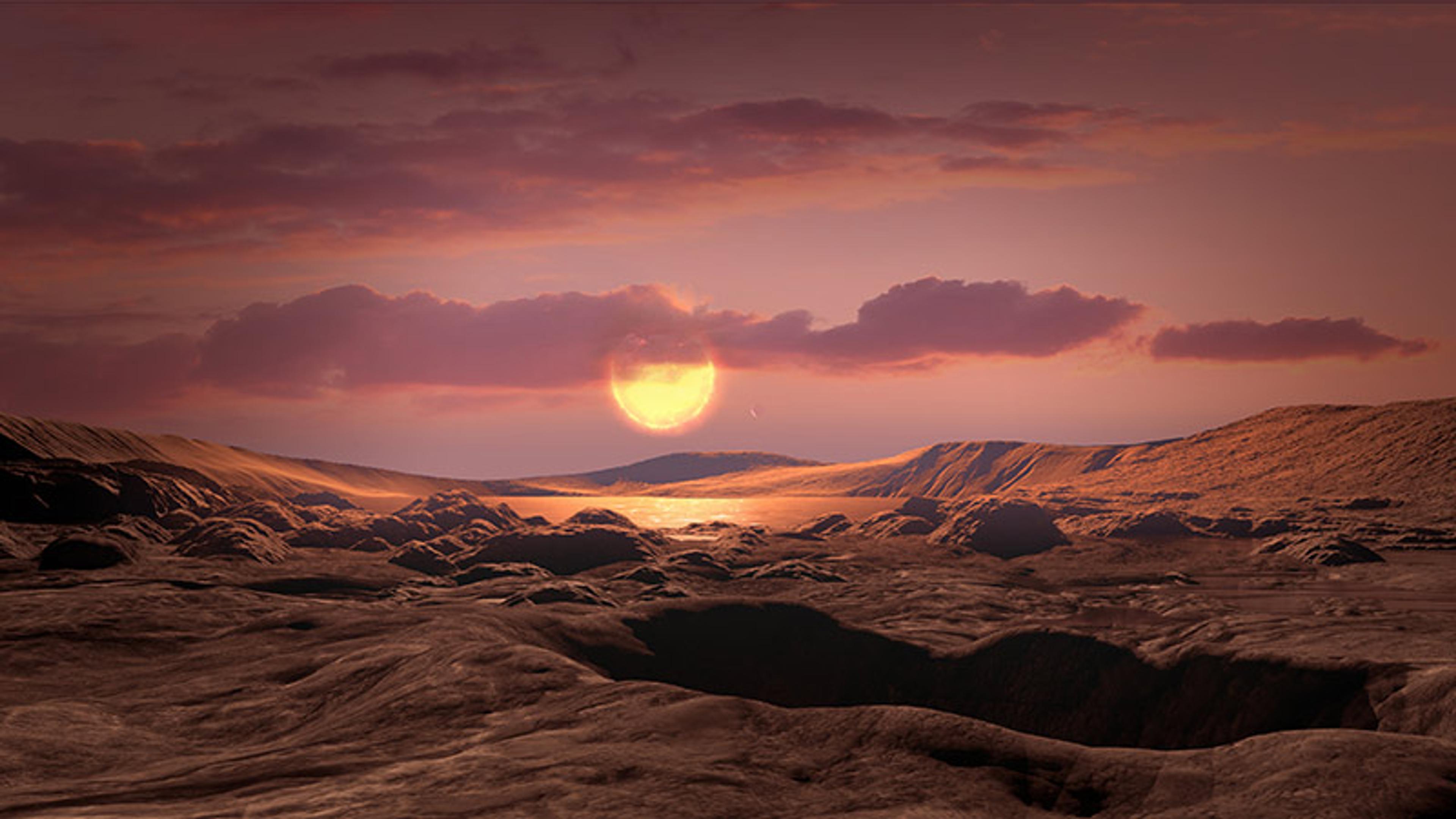
Let’s now use these numbers to predict the number of Earth-sized, temperate planets in our entire galaxy. For this, let’s take the average estimate of 30 per cent, or roughly one in three stars. Our galaxy hosts approximately 300 billion stars, which adds up to 90 billion roughly Earth-sized, roughly temperate planets. This is a huge number, and it can be very tempting to think that at least one of these is bound to look exactly like Earth.
One issue to consider is that other worlds are at unimaginable distances from us. Our neighbour Mars is on average 225 million kilometres (about 140 million miles) away. Imagine a team of astronauts travelling in a vehicle similar to NASA’s robotic New Horizons probe, one of humankind’s fastest spacecrafts – which flew by Pluto in 2015. With New Horizons’ top speed of around 58,000 kph, it would take at least 162 days to reach Mars. Beyond our solar system, the closest star to us is Proxima Centauri, at a distance of 40 trillion kilometres. Going in the same space vehicle, it would take our astronaut crew 79,000 years to reach planets that might exist around our nearest stellar neighbour.
S till, let’s for a moment optimistically imagine that we find a perfect Earth twin: a planet that really is exactly like Earth. Let’s imagine that some futuristic form of technology exists, ready to whisk us away to this new paradise. Keen to explore our new home, we eagerly board our rocket, but on landing we soon feel uneasy. Where is the land? Why is the ocean green and not blue? Why is the sky orange and thick with haze? Why are our instruments detecting no oxygen in the atmosphere? Was this not supposed to be a perfect twin of Earth?
As it turns out, we have landed on a perfect twin of the Archean Earth, the aeon during which life first emerged on our home world. This new planet is certainly habitable: lifeforms are floating around the green, iron-rich oceans, breathing out methane that is giving the sky that unsettling hazy, orange colour. This planet sure is habitable – just not to us . It has a thriving biosphere with plenty of life, but not life like ours. In fact, we would have been unable to survive on Earth for around 90 per cent of its history; the oxygen-rich atmosphere that we depend on is a recent feature of our planet.
The earliest part of our planet’s history, known as the Hadean aeon, begins with the formation of the Earth. Named after the Greek underworld due to our planet’s fiery beginnings, the early Hadean would have been a terrible place with molten lava oceans and an atmosphere of vaporised rock. Next came the Archean aeon, beginning 4 billion years ago, when the first life on Earth flourished. But, as we just saw, the Archean would be no home for a human. The world where our earliest ancestors thrived would kill us in an instant. After the Archean came the Proterozoic, 2.5 billion years ago. In this aeon, there was land, and a more familiar blue ocean and sky. What’s more, oxygen finally began to accumulate in the atmosphere. But let’s not get too excited: the level of oxygen was less than 10 per cent of what we have today. The air would still have been impossible for us to breathe. This time also experienced global glaciation events known as snowball Earths, where ice covered the globe from poles to equator for millions of years at a time. Earth has spent more of its time fully frozen than the length of time that we humans have existed.
We would have been incapable of living on our planet for most of its existence
Earth’s current aeon, the Phanerozoic, began only around 541 million years ago with the Cambrian explosion – a period of time when life rapidly diversified. A plethora of life including the first land plants, dinosaurs and the first flowering plants all appeared during this aeon. It is only within this aeon that our atmosphere became one that we can actually breathe. This aeon has also been characterised by multiple mass extinction events that wiped out as much as 90 per cent of all species over short periods of time. The factors that brought on such devastation are thought to be a combination of large asteroid impacts, and volcanic, chemical and climate changes occurring on Earth at the time. From the point of view of our planet, the changes leading to these mass extinctions are relatively minor. However, for lifeforms at the time, such changes shattered their world and very often led to their complete extinction.
Looking at Earth’s long history, we find that we would have been incapable of living on our planet for most of its existence. Anatomically modern humans emerged less than 400,000 years ago; we have been around for less than 0.01 per cent of the Earth’s story. The only reason we find Earth habitable now is because of the vast and diverse biosphere that has for hundreds of millions of years evolved with and shaped our planet into the home we know today. Our continued survival depends on the continuation of Earth’s present state without any nasty bumps along the way. We are complex lifeforms with complex needs. We are entirely dependent on other organisms for all our food and the very air we breathe. The collapse of Earth’s ecosystems is the collapse of our life-support systems. Replicating everything Earth offers us on another planet, on timescales of a few human lifespans, is simply impossible.
Some argue that we need to colonise other planets to ensure the future of the human race. In 5 billion years, our Sun, a middle-aged star, will become a red giant, expanding in size and possibly engulfing Earth. In 1 billion years, the gradual warming of our Sun is predicted to cause Earth’s oceans to boil away. While this certainly sounds worrying, 1 billion years is a long, long time. A billion years ago, Earth’s landmasses formed the supercontinent Rodinia, and life on Earth consisted in single-celled and small multicellular organisms. No plants or animals yet existed. The oldest Homo sapiens remains date from 315,000 years ago, and until 12,000 years ago all humans lived as hunter-gatherers.
The industrial revolution happened less than 500 years ago. Since then, human activity in burning fossil fuels has been rapidly changing the climate, threatening human lives and damaging ecosystems across the globe. Without rapid action, human-caused climate change is predicted to have devastating global consequences within the next 50 years. This is the looming crisis that humanity must focus on. If we can’t learn to work within the planetary system that we evolved with, how do we ever hope to replicate these deep processes on another planet? Considering how different human civilisations are today from even 5,000 years ago, worrying about a problem that humans may have to tackle in a billion years is simply absurd. It would be far simpler to go back in time and ask the ancient Egyptians to invent the internet there and then. It’s also worth considering that many of the attitudes towards space colonisation are worryingly close to the same exploitative attitudes that have led us to the climate crisis we now face.
Earth is the home we know and love not because it is Earth-sized and temperate. No, we call this planet our home thanks to its billion-year-old relationship with life. Just as people are shaped not only by their genetics, but by their culture and relationships with others, planets are shaped by the living organisms that emerge and thrive on them. Over time, Earth has been dramatically transformed by life into a world where we, humans, can prosper. The relationship works both ways: while life shapes its planet, the planet shapes its life. Present-day Earth is our life-support system, and we cannot live without it.
While Earth is currently our only example of a living planet, it is now within our technological reach to potentially find signs of life on other worlds. In the coming decades, we will likely answer the age-old question: are we alone in the Universe? Finding evidence for alien life promises to shake the foundations of our understanding of our own place in the cosmos. But finding alien life does not mean finding another planet that we can move to. Just as life on Earth has evolved with our planet over billions of years, forming a deep, unique relationship that makes the world we see today, any alien life on a distant planet will have a similarly deep and unique bond with its own planet. We can’t expect to be able to crash the party and find a warm welcome.
Living on a warming Earth presents many challenges. But these pale in comparison with the challenges of converting Mars, or any other planet, into a viable alternative. Scientists study Mars and other planets to better understand how Earth and life formed and evolved, and how they shape each other. We look to worlds beyond our horizons to better understand ourselves. In searching the Universe, we are not looking for an escape to our problems: Earth is our unique and only home in the cosmos. There is no planet B.
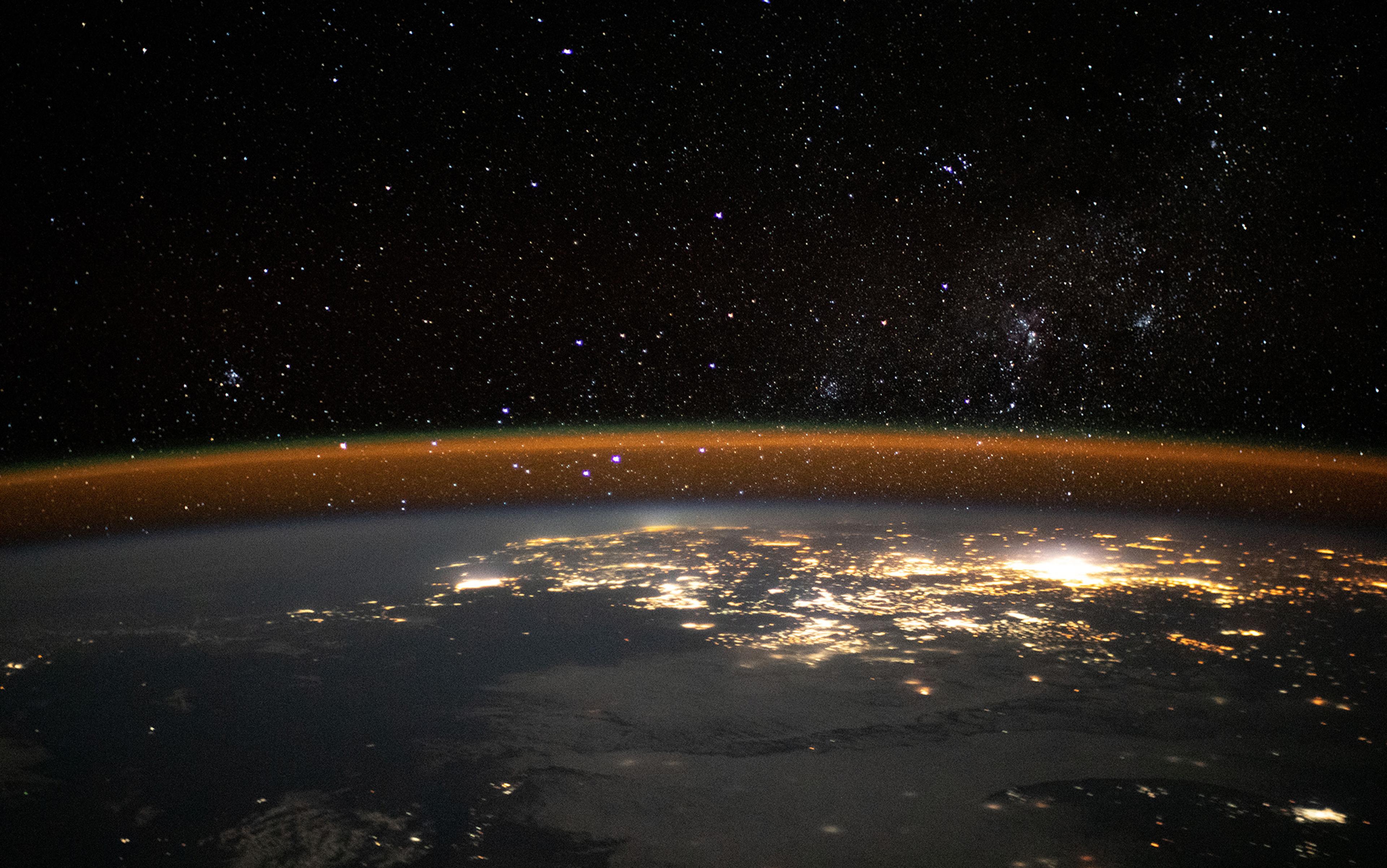
Alien life is no joke
Not long ago the search for extraterrestrials was considered laughable nonsense. Today, it’s serious and scientific

History of ideas
Reimagining balance
In the Middle Ages, a new sense of balance fundamentally altered our understanding of nature and society

Return of the descendants
I migrated to my ancestral homeland in a search for identity. It proved to be a humbling experience in (un)belonging
Jessica Buchleitner

Neuroscience
How to make a map of smell
We can split light by a prism, sounds by tones, but surely the world of odour is too complex and personal? Strangely, no
Jason Castro

The cell is not a factory
Scientific narratives project social hierarchies onto nature. That’s why we need better metaphors to describe cellular life
Charudatta Navare
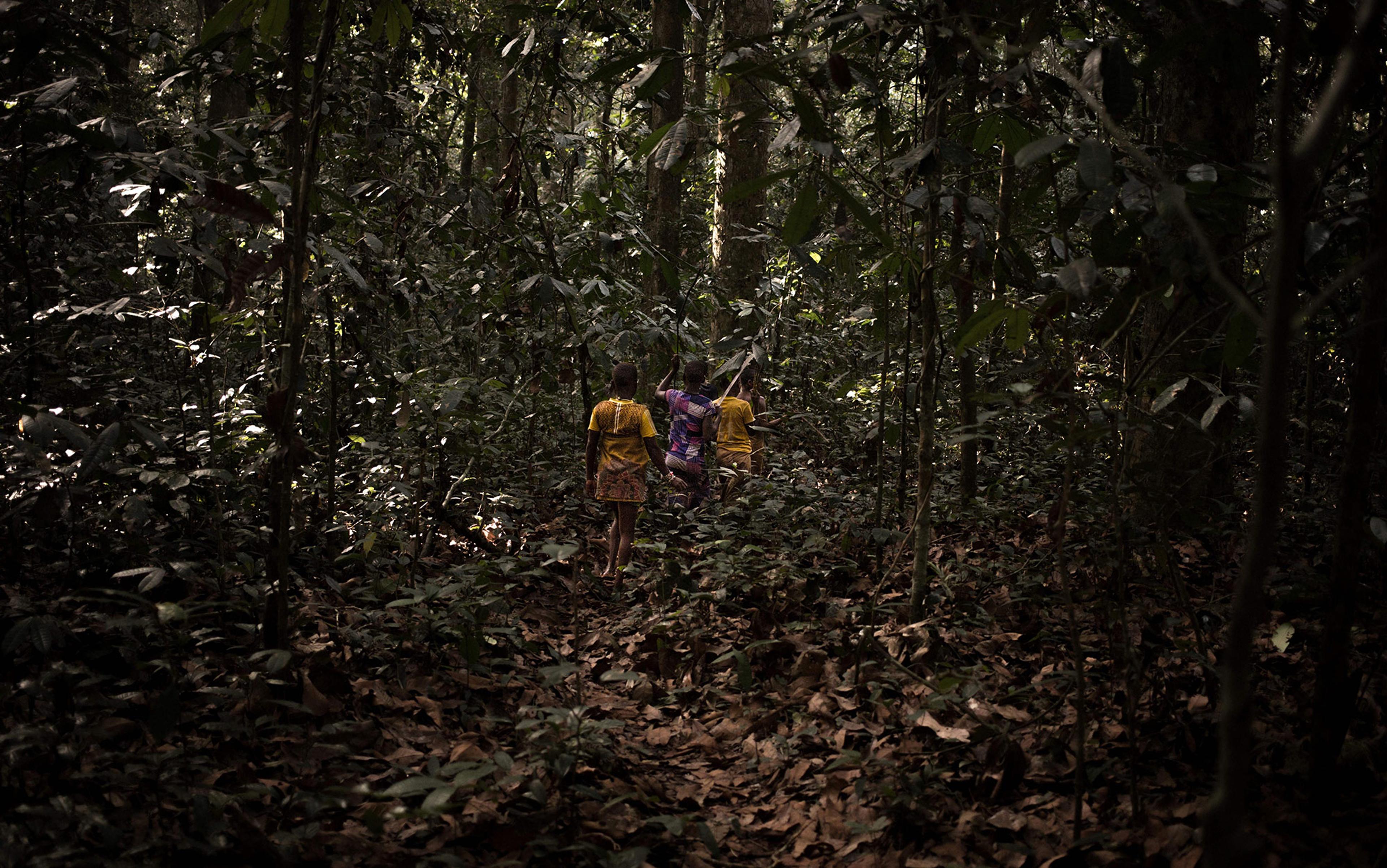
Anthropology
Societies of perpetual movement
Why do hunter-gatherers refuse to be sedentary? New answers are emerging from the depths of the Congolese rainforest
Cecilia Padilla-Iglesias
Home — Essay Samples — Science — Earth Science — The Beauty of Earth: An Essay on the Magnificence of Our Planet
The Beauty of Earth: an Essay on The Magnificence of Our Planet
- Categories: Earth Science
About this sample

Words: 598 |
Published: Mar 8, 2024
Words: 598 | Page: 1 | 3 min read
Table of contents
The natural wonders of earth, the diverse inhabitants of earth, preserving the beauty of earth.

Cite this Essay
Let us write you an essay from scratch
- 450+ experts on 30 subjects ready to help
- Custom essay delivered in as few as 3 hours
Get high-quality help

Prof. Kifaru
Verified writer
- Expert in: Science

+ 120 experts online
By clicking “Check Writers’ Offers”, you agree to our terms of service and privacy policy . We’ll occasionally send you promo and account related email
No need to pay just yet!
Related Essays
1 pages / 608 words
4 pages / 1699 words
1 pages / 678 words
2 pages / 1106 words
Remember! This is just a sample.
You can get your custom paper by one of our expert writers.
121 writers online
Still can’t find what you need?
Browse our vast selection of original essay samples, each expertly formatted and styled
Related Essays on Earth Science
Science, the systematic study of the natural world, plays a vital role in our everyday lives. From the moment we wake up in the morning to the time we go to bed at night, we are surrounded by the wonders of science. It is [...]
Similarities Between Natural Sciences And HistoryIntroduction:Imagine walking through a vast library, with shelves upon shelves of books stretching out in every direction. On one side, you see volumes dedicated to the mysteries [...]
The Earth is like a giant layer cake made up of many different layers and different fillings. Except the Earth fillings are not made up of good tasting frosting and cake but more rocks and metal. There are four different layers [...]
Carbon in its various forms has been known since ancient times in the form of soot, charcoal, graphite and diamonds. Its name is derived from a Latin word "carbo" which means "charcoal". Ancient cultures did not realize, of [...]
The of the State of Tennessee is very diverse. This is characterized by the variety of landscapes in the area. Tennessee landscape is majorly made up of these landforms; river valley plains, highlands and basins, and mountains. [...]
Basaltic magma - SiO2 45-55 wt%, high in Fe, Mg, Ca, low in K, NaAndesitic magma - SiO2 55-65 wt%, intermediate. in Fe, Mg, Ca, Na, KRhyolitic magma - SiO2 65-75%, low in Fe, Mg, Ca, high in K, NaTemperature of magmas is [...]
Related Topics
By clicking “Send”, you agree to our Terms of service and Privacy statement . We will occasionally send you account related emails.
Where do you want us to send this sample?
By clicking “Continue”, you agree to our terms of service and privacy policy.
Be careful. This essay is not unique
This essay was donated by a student and is likely to have been used and submitted before
Download this Sample
Free samples may contain mistakes and not unique parts
Sorry, we could not paraphrase this essay. Our professional writers can rewrite it and get you a unique paper.
Please check your inbox.
We can write you a custom essay that will follow your exact instructions and meet the deadlines. Let's fix your grades together!
Get Your Personalized Essay in 3 Hours or Less!
We use cookies to personalyze your web-site experience. By continuing we’ll assume you board with our cookie policy .
- Instructions Followed To The Letter
- Deadlines Met At Every Stage
- Unique And Plagiarism Free

Essay on Saturn
Students are often asked to write an essay on Saturn in their schools and colleges. And if you’re also looking for the same, we have created 100-word, 250-word, and 500-word essays on the topic.
Let’s take a look…
100 Words Essay on Saturn
Introduction.
Saturn, the sixth planet from the Sun, is a fascinating part of our solar system. It’s well-known for its beautiful rings made of ice and rock.
Physical Features
Saturn is a gas giant, primarily composed of hydrogen and helium. It’s the second-largest planet, only smaller than Jupiter. It has a pale yellow hue due to ammonia crystals in its upper atmosphere.
Rings and Moons
Saturn’s ring system is its most striking feature. These rings are composed of countless particles, ranging from tiny ice grains to large rocks. Saturn also has 82 known moons.
Exploration
Saturn has been visited by several spacecraft, including the Pioneer, Voyager, and Cassini missions, providing us with valuable information about this distant planet.
Also check:
- 10 Lines on Saturn
- Paragraph on Saturn
250 Words Essay on Saturn
Saturn, the sixth planet from the sun, is a celestial marvel that has intrigued astronomers for centuries. Known for its spectacular ring system, Saturn has a unique place in our solar system’s landscape.
Physical Characteristics
Saturn is a gas giant, predominantly composed of hydrogen and helium, much like Jupiter. It’s the second-largest planet in the solar system, but its low density makes it less than a third of Earth’s mass. Saturn is distinguished by its iconic rings, made up of ice particles, dust, and rocky debris, which likely originated from shattered moons or comets.
Orbit and Rotation
Saturn’s distance from the sun causes it to have a long orbital period of about 29.5 Earth years. Its day, however, is much shorter, with a rotation speed that results in a day of just over 10.5 hours.
Saturn boasts a significant number of moons, with 82 known satellites. The largest, Titan, is larger than the planet Mercury and is the only moon in the solar system known to have a dense atmosphere.
Saturn has been visited by four spacecraft. The most successful of these missions, the Cassini-Huygens, provided a wealth of information about the planet, its rings, and its moons, reshaping our understanding of this complex system.
Saturn’s unique characteristics and its wealth of satellites make it a fascinating subject of study. As we continue to explore its mysteries, Saturn promises to keep challenging our understanding of the universe.
500 Words Essay on Saturn
Saturn, the sixth planet from the sun in our solar system, is an emblem of celestial beauty and mystery. Named after the Roman god of agriculture, Saturn is renowned for its complex ring system and its multitude of moons, which make it a subject of intense study and fascination.
Saturn is the second-largest planet in the solar system, with a diameter about nine times that of Earth. It is a gas giant, primarily composed of hydrogen and helium, similar to Jupiter. However, Saturn stands out due to its strikingly visible rings, comprised of ice particles with a small amount of rocky debris and dust. These rings extend up to 282,000 kilometers from the planet, yet are remarkably thin, at most only about one kilometer thick.
The Ring System
Saturn’s rings, named alphabetically in the order of their discovery, are a spectacular feature of the solar system. They are composed of countless small particles, ranging in size from tiny grains to giant chunks, all orbiting Saturn. The rings’ origin remains a topic of debate among scientists. Some theories suggest they are remnants of a destroyed moon of Saturn, while others propose they are leftover material from the formation of the planet.
Saturn’s Moons
Saturn is orbited by 82 known moons, more than any other planet in the solar system. The largest moon, Titan, is the second-largest moon in the solar system and is larger than the planet Mercury. Titan is of particular interest to scientists because it has a dense atmosphere and stable bodies of surface liquid, making it somewhat Earth-like and a potential host for microbial life.
Exploration of Saturn
Saturn has been explored over the years by several spacecraft, most notably Pioneer 11, Voyager 1 and 2, and the Cassini-Huygens mission. The latter, a collaboration between NASA, the European Space Agency, and the Italian Space Agency, was the most comprehensive study of Saturn. Launched in 1997, it arrived at Saturn in 2004 and spent 13 years studying the planet, its rings, and its moons, providing invaluable data and stunning images.
Saturn remains an object of fascination for both astronomers and the public. Its intricate ring system, multitude of moons, and the potential for life on Titan make it a prime focus for future exploration. As technology advances, so too will our understanding of this majestic gas giant, continuing to reveal the secrets that Saturn holds in its celestial dance around the sun.
That’s it! I hope the essay helped you.
If you’re looking for more, here are essays on other interesting topics:
- Essay on Satellite
- Essay on Sanitation
- Essay on Sanchi Stupa
Apart from these, you can look at all the essays by clicking here .
Happy studying!
Leave a Reply Cancel reply
Your email address will not be published. Required fields are marked *
Save my name, email, and website in this browser for the next time I comment.

Essay on Life on Mars for Students and Children
500 words essay on life on mars.
Mars is the fourth planet from the sun in our solar system. Also, it is the second smallest planet in our solar system. The possibility of life on mars has aroused the interest of scientists for many years. A major reason for this interest is due to the similarity and proximity of the planet to Earth. Mars certainly gives some indications of the possibility of life.

Possibilities of Life on Mars
In the past, Mars used to look quite similar to Earth. Billions of years ago, there were certainly similarities between Mars and Earth. Furthermore, scientists believe that Mars once had a huge ocean. This ocean, experts believe, covered more of the planet’s surface than Earth’s own oceans do so currently.
Moreover, Mars was much warmer in the past that it is currently. Most noteworthy, warm temperature and water are two major requirements for life to exist. So, there is a high probability that previously there was life on Mars.
Life on Earth can exist in the harshest of circumstances. Furthermore, life exists in the most extreme places on Earth. Moreover, life on Earth is available in the extremely hot and dry deserts. Also, life exists in the extremely cold Antarctica continent. Most noteworthy, this resilience of life gives plenty of hope about life on Mars.
There are some ingredients for life that already exist on Mars. Bio signatures refer to current and past life markers. Furthermore, scientists are scouring the surface for them. Moreover, there has been an emergence of a few promising leads. One notable example is the presence of methane in Mars’s atmosphere. Most noteworthy, scientists have no idea where the methane is coming from. Therefore, a possibility arises that methane presence is due to microbes existing deep below the planet’s surface.
One important point to note is that no scratching of Mars’s surface has taken place. Furthermore, a couple of inches of scratching has taken place until now. Scientists have undertaken analysis of small pinches of soil. There may also have been a failure to detect signs of life due to the use of faulty techniques. Most noteworthy, there may be “refugee life” deep below the planet’s surface.
Get the huge list of more than 500 Essay Topics and Ideas
Challenges to Life on Mars
First of all, almost all plants and animals cannot survive the conditions on the surface of Mars. This is due to the extremely harsh conditions on the surface of Mars.
Another major problem is the gravity of Mars. Most noteworthy, the gravity on Mars is 38% to that of Earth. Furthermore, low gravity can cause health problems like muscle loss and bone demineralization.
The climate of Mars poses another significant problem. The temperature at Mars is much colder than Earth. Most noteworthy, the mean surface temperatures of Mars range between −87 and −5 °C. Also, the coldest temperature on Earth has been −89.2 °C in Antarctica.
Mars suffers from a great scarcity of water. Most noteworthy, water discovered on Mars is less than that on Earth’s driest desert.
Other problems include the high penetration of harmful solar radiation due to the lack of ozone layer. Furthermore, global dust storms are common throughout Mars. Also, the soil of Mars is toxic due to the high concentration of chlorine.
To sum it up, life on Mars is a topic that has generated a lot of curiosity among scientists and experts. Furthermore, establishing life on Mars involves a lot of challenges. However, the hope and ambition for this purpose are well alive and present. Most noteworthy, humanity must make serious efforts for establishing life on Mars.
FAQs on Life on Mars
Q1 State any one possibility of life on Mars?
A1 One possibility of life on Mars is the resilience of life. Most noteworthy, life exists in the most extreme places on Earth.
Q2 State anyone challenge to life on Mars?
A2 One challenge to life on Mars is a great scarcity of water.
Customize your course in 30 seconds
Which class are you in.

- Travelling Essay
- Picnic Essay
- Our Country Essay
- My Parents Essay
- Essay on Favourite Personality
- Essay on Memorable Day of My Life
- Essay on Knowledge is Power
- Essay on Gurpurab
- Essay on My Favourite Season
- Essay on Types of Sports
Leave a Reply Cancel reply
Your email address will not be published. Required fields are marked *
Download the App

Essays About Earth: 7 Essay Examples And Topic Ideas
There are many things you need to know about our planet, so if you’re making essays about Earth, you can read these sample essays and topic ideas.
The planet Earth is where we, humans, and other living creatures live. It also provides us with all the necessities we need – air to breathe, water to drink, and soil to grow fruits and vegetables. Without its natural resources, life would be impossible for all of us.
Writing an essay about Earth can help give knowledge and spread awareness about climate change or look at the beauty of our planet. If you are writing an essay about the Earth, here are some essay examples and topic ideas to help you get started.
Tip: If you want to use the latest grammar software, read our guide to using an AI grammar checker .
1. Short Essay On The Structure Of Planet Earth By Shyam Soni
2. interest and concern about the fate of the earth by john olson, 3. our planet in danger by derrick wells, 4. a planet without trees: a nightmare or our future by shannon cain, 5. the possibility of an asteroid falling to earth by lewis rios, 6. save earth before colonizing mars by luz estrada, 7. my earth, my responsibility by poonam ghimire, topic idea essays about earth, 1. are there more planets like earth, 2. how has the earth’s surface changed over the years, 3. causes and effects of global warming, 4. does planting trees and reforestation help limit global warming, 5. how does population growth affect earth’s climate change, 6. human impacts on the planet earth, 7. how did the planet earth form.
“Direct observation of the interior of the Earth is not possible as the interior becomes hotter with depth which is convincingly indicated by the volcanic eruptions. Apart from the seismological studies, other important sources of data, even though indirect, logically prove that the Earth’s body comprises several layers, which are like shells resting one above the other. These layers are distinguished by their physical and chemical properties, particularly, their thickness, depth, density, temperature, metallic content, and rocks.”
Author Shyam Soni discusses some essential facts about the structure of the planet Earth. This essay focuses on its layered structure and the differences in the density and temperature at different depths.
“I have found myself increasingly interested and concerned with the fate of the Earth and the way humankind views sustainability. In my perspective, many humans believe that Earth’s materials and resources are infinite, they will always be there to feed and maintain human life. The Earth will endlessly support and provide for the needs of the humans that inhabit it. Yet, that is just simply not true, as the human population grows we use more and more of the natural resources Earth provides.”
Author John Olson shares his point of view about the Earth’s “infinite” resources and its sustainability. However, Olson tells us that it may not be as unlimited as we think because of the rapid growth of the human population.
“Since the beginning of the Industrial Revolution in the 18th century that started in England, the people during those times were already writing down the blueprint for a problem that the succeeding generations will have to face – the increasing problem of Carbon Dioxide emissions in our atmosphere. Carbon dioxide (CO2) is released in tons, millions of tons every day in every country – released from various factories and cars most especially. This buildup of toxic gases such as the carbon dioxide heats up our planet thereby increasing the possibility, and the danger of global warming – this is what we call the greenhouse effect.”
Author Derrick Wells talks about one of the environmental problems we are facing today – the Greenhouse Effect and the actions that we could take to save our planet Earth from the danger it can pose.
“Can we imagine a world without trees? What a world without trees would look like? Could such a world even exist? Let us close our eyes, and try to imagine a desolate Earth. Imagine no more paper, and everyone would have to resort to some other source or maybe technology could help, but that is, if anyone was left at that time. Trees are an important factor to our existence not only because they produce paper, lumber, or chewing gum, but due to the fact that they serve an important role in the carbon cycle, they are the key to our very existence! Due to the ever increasing population, that seemingly distant future is getting near each passing day.”
Author Shannon Cain shares his thought about a planet without trees, telling us what it would be like and what we can do to prevent it from happening to our home planet – the Earth.
“Jonathan Haidt gave a speech about the possibility of an asteroid falling on Earth and asked the audience what people could do to stop them. Haidt notes that if an asteroid threatens to destroy the Earth, people will forget about their differences and stand together to fight for their survival. This is what he refers a common ground in the midst of a crisis. Haidt’s video shows us the many problems that people are facing, but yet people cannot find a common ground to fight them while the issues are threatening all of us.”
Author Lewis Rios talks about the possibility of an asteroid falling on Earth and then relates it to some common problems we are facing right now. Such as poverty, which tells us that we should all cooperate and work together to find a solution to these threats to survive.
“Has humanity irreversibly defaced Earth from being a sustainable planet for further centuries? Many would believe that humanity has come to a point of constant destruction of Earth with no hope for change. This thought process has come forth with the resolution of starting a new sustainable planet on Mars. However, it is tremendously more challenging to restart than to fix damage and change simplistic daily routines.”
Author Luz Estrada shares her opinion about the plan of starting a new sustainable planet on Mars. Estrada shares with the readers that it is much easier to save and fix Earth – as it is now – rather than thinking of starting a new life on a different planet, which is impossible for most people.
“Earth is a beautiful living planet in the Universe and the common habitat of more than 7 billion human population and millions of species of biodiversity. Our Earth provides us with food, shelter, and most of our requirements. Despite unavoidable free services provided by the earth to humans, we are not able to pay off her kindness to us. Rather we humans are being cruel to our Earth with our selfish activities.”
Author Poonam Ghimire talks about the selfish acts that cause Earth’s slow destruction. Ghimire encourages the readers to be responsible enough to protect and preserve our planet for the next generations.
Earth, our home, is the only planet known to support life, although there are current missions determining Mars’ past and future potential for life. While scientists continue to look for signs of life elsewhere in the universe, Earth remains the only place where we’ve ever identified living creatures. If you are writing an essay about the Earth, you can use this topic idea to discuss some Earth-like planets discovered so far.
The planet Earth has not always looked the same way it looks today; the United States, a billion years ago, was in a completely different location compared to where it is today! So, how does this happen? Why does this happen? In your essay about the Earth, you can use this topic idea to give the readers some understanding of how our planet has changed over time – like the things that took place and are still taking place.
Recent global warming is mainly because of human actions, which involve releasing greenhouse gases into the atmosphere. An increase in greenhouse gases leads to a more significant greenhouse effect, which results in increased global warming. Global warming is also being felt everywhere – drought, heatwaves, melting glaciers, rising sea levels, and storms. If you are writing an essay about the Earth, you can discuss this topic in more detail to spread awareness to your readers out there.

Planting more trees is one of the most effective ways to lessen atmospheric carbon dioxide (CO2) and stop global warming. As the forests grow, they remove the carbon dioxide from the air through photosynthesis, which works as a natural reservoir to store carbon. Reforestation, one of the planned projects worldwide, is thought to help protect the environment for the next generations. You can use this topic idea for your essay about the Earth to encourage your readers to plant more trees to reduce the harmful effects of deforestation and save our home planet, Earth, from getting slowly destroyed.
Since humans require fossil fuels to power their increasingly mechanized lifestyles, human population growth is undoubtedly a significant contributor to global warming. More people mean more demand for oil, gas, coal, and other underground fuels that, when burned, release enough carbon dioxide (CO2) into the atmosphere to trap warm air inside like a greenhouse. So, in your essay about the Earth, let your readers know to what extent human population growth affects climate change and what can be done about it.
Humans affect the planet Earth in many ways – overpopulation, pollution, burning fossil fuels, and deforestation. These things have caused global warming, soil erosion, poor air quality, and non-potable water. In your essay about the Earth, you can detail these negative impacts and how they can affect us, humans.
The planet Earth’s formation remains a bizarre, scientific mystery. This is because we live on a planet in a solar system with seven other planets, and thousands of exoplanets have been discovered so far. However, the formation of planets like Earth is still a hotly debated topic. So, currently, there are only 2 leading theories about planetary formation – in your essay about the earth, look into this topic in more detail to share some exciting facts about the Earth with your readers.
If you’re stuck picking your next essay topic, check out our guide on how to write a diverse essay.
If you’re still stuck, check out our general resource of essay writing topics .

Bryan Collins is the owner of Become a Writer Today. He's an author from Ireland who helps writers build authority and earn a living from their creative work. He's also a former Forbes columnist and his work has appeared in publications like Lifehacker and Fast Company.
View all posts

25,000+ students realised their study abroad dream with us. Take the first step today
Meet top uk universities from the comfort of your home, here’s your new year gift, one app for all your, study abroad needs, start your journey, track your progress, grow with the community and so much more.

Verification Code
An OTP has been sent to your registered mobile no. Please verify

Thanks for your comment !
Our team will review it before it's shown to our readers.

- School Education /
Essay on Save Earth: Samples in 100, 150 and 200 Words

- Updated on
- Nov 11, 2023

There is a popular saying that goes, ’You don’t bite the hand that feeds you. Well, then why harm the planet that is providing for you?’ We all should know that our planet Earth is the only planet where life can exist. Our planet provides us with basic necessities such as water, air, food to eat, and much more. So if you want to save our planet Earth for yourself and for the coming future generations then do give this blog a read. Today we will be talking about how you can save your planet Earth by taking all the required measures. We have also listed some sample essay on Save Earth which will help you to talk about the same in public.
Table of Contents
- 1 Why is Saving Earth so Important?
- 2 Essay on Save Earth in 100 Words
- 3 Essay on Save Earth in 150 Words
- 4 Essay on Save Earth in 200 Words
Why is Saving Earth so Important?
Our planet Earth is the only planet that provides us with raw materials, oxygen, food which we need for fuel, and other essential materials.
There are a number of reasons why saving the Earth is so important:
- Our Earth is the only planet that supports life. Despite signs of organic molecules and water on other planets and moons, life is only known to exist on Earth. There would be nowhere else for us to go if not Earth.
- Our Earth provides us with basic necessities such as medicine, food, clean water, and air to breathe.
- The combustion of fossil fuels releases harmful greenhouse gases into the atmosphere, which traps heat and warms the earth. Rising sea levels, melting glaciers, and more extreme weather events are just a few of the negative effects of climate change that are already being felt.
Also Read: Essay on Social Issues
Essay on Save Earth in 100 Words
The only planet in the cosmos that is known to sustain life is Earth. Since it is our home, we must take care of it.
There are numerous reasons why protecting the planet is crucial. To begin with, it is our only place of residence. There won’t be somewhere else for us to go if we destroy Earth. Second, Earth gives us food, water, air, and shelter—everything we require to survive. Third, a wide variety of biodiversity exists on Earth, which is vital to human health.
Unfortunately, the health of Earth is being threatened by human activity. Among the difficulties we confront are deforestation, pollution, and climate change.
To save the Earth, we can all do our part. Here are some actions you may take:
- Cut back on the use of fossil fuels. Make more of an effort to walk or bike, drive less, and take public transit wherever you can.
- Make the switch to alternative energy sources like wind and solar energy.
- At home, use less energy and water.
- Reduce trash via composting and recycling.
- Encourage companies and groups that are engaged in environmental protection.
Both our own life and the survival of future generations depend on saving the planet. We can contribute to ensuring that our planet is healthy and habitable for many years to come by acting now.
Also Read: Essay on Save Environment: Samples in 100, 200, 300 Words
Essay on Save Earth in 150 Words
Since the Earth is our home, it is up to us to preserve it. However, the health of the planet is in danger due to human activity. Among the difficulties we confront are deforestation, pollution, and climate change.
The most important environmental issue of our day is climate change. Greenhouse gases are released into the atmosphere, which causes the earth to warm. Among the detrimental repercussions of climate change that are already being felt are rising sea levels, melting glaciers, and an increase in extreme weather occurrences.
Pollution poses a serious threat to Earth as well. Among the materials we use to damage the air, water, and land are chemicals, plastics, and trash. Not only can pollution harm humans and wildlife, but it can also ruin ecosystems.
Deforestation is another issue. In this, the trees are removed and instead, buildings are constructed. Forests filter water in addition to providing habitat for species and regulating the climate. Deforestation is one of the primary causes of both climate change and biodiversity loss.
We must take action to safeguard Earth from these threats. We can potentially reduce our carbon footprint by switching to renewable energy sources and consuming less energy. We can also reduce pollution by using less plastic, recycling, and composting. We can also safeguard forests by planting trees and promoting sustainable forestry practices.
Preserving the planet is essential for our own existence as well as that of future generations. To keep our world safe, each of us has a responsibility.
Also Read: Essay on Unity in Diversity in 100 to 200 Words
Essay on Save Earth in 200 Words
The only planet in the solar system where humanity can survive is Earth. Since our planet gives us access to fundamental essentials like clean water, fresh air, and food to eat, it is our duty as humans to make sure that it is habitable for future generations.
We can see that, among all the urgent problems, one of the most significant ones that affect humanity is climate change. Among the detrimental repercussions of climate change that are already being felt are rising sea levels, melting glaciers, and an increase in extreme weather occurrences.
Pollution is another major problem. The majority of the materials that are key to pollution of the air, water, and land are harmful chemicals, plastics that are carelessly thrown away, and other materials. This is not only harmful to humans and wildlife but also to the environment.
Deforestation is the third main issue; it is the removal of trees for construction or other purposes, like agriculture. One of the main contributors to both climate change and biodiversity loss is deforestation. Consequently, we need to act to defend Earth from these dangers.
We hope this essay on Save Earth helped you with some knowledge of some of the pressing issues we face on a daily basis and what we can do to save our planet.
Related Articles
We can conserve the globe by avoiding contamination of the Earth and its natural resources, including the air and water.
Reducing carbon emissions is the first step towards saving our planet. This can be done by using environmentally friendly resources, conserving water and following the Reduce, Reuse and Recycling practices.
Clearing forest areas for agricultural, human settlement or any other commercial activities is known as deforestation.
For more information on such interesting topics, visit our essay-writing page and follow Leverage Edu !
Malvika Chawla
Malvika is a content writer cum news freak who comes with a strong background in Journalism and has worked with renowned news websites such as News 9 and The Financial Express to name a few. When not writing, she can be found bringing life to the canvasses by painting on them.
Leave a Reply Cancel reply
Save my name, email, and website in this browser for the next time I comment.
Contact no. *

Connect With Us

25,000+ students realised their study abroad dream with us. Take the first step today.

Resend OTP in

Need help with?
Study abroad.
UK, Canada, US & More
IELTS, GRE, GMAT & More
Scholarship, Loans & Forex
Country Preference
New Zealand
Which English test are you planning to take?
Which academic test are you planning to take.
Not Sure yet
When are you planning to take the exam?
Already booked my exam slot
Within 2 Months
Want to learn about the test
Which Degree do you wish to pursue?
When do you want to start studying abroad.
January 2024
September 2024
What is your budget to study abroad?

How would you describe this article ?
Please rate this article
We would like to hear more.
Have something on your mind?

Make your study abroad dream a reality in January 2022 with
India's Biggest Virtual University Fair

Essex Direct Admission Day
Why attend .

Don't Miss Out
Life on Other Planets Essay
Article review.
The article chosen for this part of the assignment is titled “The Extremely Halophilic Microorganisms, a Possible Model for Life on Other Planets,” written by Sergiu Fendrihan, and published in 2017 in Current Trends in Natural Sciences journal. The researchers have analyzed the microscopic life that exists in areas of extreme heat, where water supply exists in the form of salt lakes (Fendrihan 148). Such areas include the Dead Sea, located in the Middle East, as well as various smaller salt lakes found in Africa and Australia.
What these locations have in common is the extremity of conditions in which microorganisms have to exist. According to Fendrihan (148), there is a multitude of halophilic and halotolerant microorganisms inhabiting these areas, up to 159 different subspecies belonging to the Halobacteriaceae family. In addition, these organisms prove to be very resistant to other extremes, such as UV radiation, heat, and lack of nutrients necessary for other bacteria.
Due to the extreme resistance of these bacteria to various hazards, this study provides important data for discovering life on other planets and moons. Mars exhibits signs of water having been present on its surface. In addition, evidence of salty underground oceans has been found on the moons of Saturn and Jupiter (Enceladus and Europa).
Thus, studying halophilic microorganisms supports the possibility of the existence of life on planets previously deemed uninhabitable. Low requirements for water and nutrients as well as high resistance to the elements increases their chances of survival. Investigating these planets would enrich the existing knowledge of space and biology.
Article Discussions
The article titled “Life on Mars: Exploration and Evidence” by Nola Taylor Redd provides cursory information about the state of research regarding life on Mars. The planet used to have large water deposits that were lost due to irradiation and exposure to harsh temperatures. The article suggests that life on Mars may still exist underneath the surface of the planet (Redd). Question: What exactly happened that altered Mars’s climate and caused it to lose so much of its water?
The second article titled “Aliens May Well Exist in a Parallel Universe, New Studies Find” by Brandon Specktor speculates about the existence of life in other dimensions. This article seems more like speculation rather than a contribution to the scientific community, as evidence of the existence of other dimensions is purely theoretical (Specktor). Question: If parallel universes exist, can they influence the events in our universe?
The third article titled “The Four Best Places for Life in Our Solar System” by Nicole Mortillaro provides a summary of four potential places for finding life. These planets and moons include Mars, Europa, Enceladus, and Titan (Mortillaro). This article outlines the requirements currently used to determine the feasibility of life on other planets. Question: Why did NASA restrict itself to studying Mars instead of sending a drone on one of the moons?
The fourth article written by Mike Wall speaks of the protective gravitational barrier of our solar system, which filters out charged particles coming from outside of the solar system. The existence of this protective field makes life on Earth possible (Wall). Studying it would help determine which systems can potentially harbor life and which could not. Question: Is the gravitational barrier unique to the Solar system alone?
The fifth article written by Lisa Kaspin-Powell explores the potential of non-H2O-based lifeforms existing on Titan. The article informs the readers that the elements found in Titan’s atmosphere can form cellular membranes similar to phospholipid molecular chains (Kaspin-Powell). Question: What other elements could potentially form cellular membranes?
The last article written by Seth Shostack provides a list of eight planets within the scope of our solar system that has the potential of harboring life. Aside from the 4 candidates mentioned in the article by Mortillaro, the article adds Earth, Venus, Ganymede, and Callisto, which show gravitational signs of possessing underground water (Shostak). Question: How is gravity related to the presence or absence of water?
Works Cited
Fendrihan, Sergiu. “The Extremely Halophilic Microorganisms, A Possible Model for Life on Other Planets.” Current Trends in Natural Sciences, vol. 6, no. 12, 2017, pp. 147-151.
Kaspin-Powell, Lisa. “Does Titan’s Hydrocarbon Soup Hold a Recipe for Life?” Astrobiology Magazine . 2018. Web.
Mortillaro, Nicole. “ The Four Best Places for Life in Our Solar System .” Global News . 2014. Web.
Redd, Nola Taylor. “ Life on Mars: Exploration and Evidence. ” Space. 2017. Web.
Shostak, Seth. “ 8 Worlds Where Life Might Exist. ” Space. 2006. Web.
Specktor, Brandon. “ Aliens May Well Exist in a Parallel Universe, New Studies Find. ” Space. 2018. Web.
Wall, Mike. “ NASA Will Launch a Probe to Study the Solar System’s Protective Bubble in 2024. ” Space. 2018. Web.
- Chicago (A-D)
- Chicago (N-B)
IvyPanda. (2023, December 13). Life on Other Planets. https://ivypanda.com/essays/life-on-other-planets/
"Life on Other Planets." IvyPanda , 13 Dec. 2023, ivypanda.com/essays/life-on-other-planets/.
IvyPanda . (2023) 'Life on Other Planets'. 13 December.
IvyPanda . 2023. "Life on Other Planets." December 13, 2023. https://ivypanda.com/essays/life-on-other-planets/.
1. IvyPanda . "Life on Other Planets." December 13, 2023. https://ivypanda.com/essays/life-on-other-planets/.
Bibliography
IvyPanda . "Life on Other Planets." December 13, 2023. https://ivypanda.com/essays/life-on-other-planets/.
- Astronomy: Nature of Life on Other Planets
- Discovering Live on Other Planets Before 2050
- Humanities: Galileo and Four Moons of Jupiter
- The Search for Life on Titan and Other Planets
- Titan Company Limited Analysis
- Global Brand: Titan Industries Limited
- The Solar System’s Nebular Model
- "Fertile Frontiers" by Nadia Drake
- Astronomy of the Planets: Kepler's Law, Lunar Eclipse, Moon
- The Status of Pluto Needs to Remain as a Planet
- Astronomy and Mystery Solar System
- Solar System Colonization in Science Fiction vs. Reality
- Asteroid Fast Facts at the NASA Website
- Planet Mercury and Its Exploration
- General Features of Jupiter
Talk to our experts
1800-120-456-456
- Save Earth Essay

Essay on Save Earth
Each living being on Earth knows the importance of Earth in our lives. Without Earth, we cannot even imagine living. Have you ever thought how we would walk if there is no Earth, there will be no water to drink, there will not be animals living here, and of course, no cultivation, so no food to eat. This means to say that the life of humans, as well as other living beings, cannot be imagined without Earth.
Life is possible on the planet Earth and its related resources. Can you imagine a life on the Earth if resources are not available here. And, the answer comes not at all. The resources like air, sunlight, water, creatures, minerals, and vegetation are integral parts of the Earth. But with the increasing level of pollution, these resources are getting affected and either humans are destroying or depleting recklessly. If we have not taken a calculative step to save the Earth, it is going to be difficult to establish a sustainable future on the earth. Let’s understand why is it so crucial to save the Earth from these things:
WhyiIs Saving The Earth Necessary?
In order to save the earth, we must understand that resources that are provided by earth are limited. However, the majority of us are unaware of this fact and we are not judiciously utilizing the resources. In order to safeguard the existence of humans, we need to protect the earth and take care of it. All living beings are dependent on the earth for their survival and so we should use the gist of nature in a thoughtful way. The increase in pollution and damage caused by humans are affecting the earth so rapidly that it is threatening our survival.
Saving earth is not merely the need of the hour but much more. The extent of degradation caused by humans is becoming irreparable. This is one of the reasons why all the resources are getting highly polluted. The change in climate is also one of the examples that are caused due to severe pollution. Moreover, animals, birds are getting extinct and the worlds around us are slowly approaching the end. Nothing could be scarier than this. Therefore, saving the earth is the primary need and we should make conscious decisions to make the earth a better and sustainable place to live in.
It is and has been our responsibility to protect the planet that we live in but rather we become selfish and do such things that create more pollution in our environment. As the most evolved species of the environment, we should understand that our planet is the only planet that supports life. So when the earth will be in peril, we will not have the option to move to another planet for our safety.
Hence, it is important to make the most use of what we have right now in a sustainable manner. Our approach will not only save the earth but our lives as well. Moreover, our future generation will be bestowed with a healthy environment to live in.
Ten Simple Things to Save the Earth
Live by the mantra- Reduce, Reuse, and Recycle.
Keep our surroundings clean
Plant more trees
Conserve water and water bodies
Educate people about the significance of conserving nature
Shop wisely
Cycle more and drive fewer cars on the road
Use LED lights
Don’t discharge industrial effluents in the river or other water bodies
Choose sustainability in every step of life
Therefore, by making small changes in our lifestyle we can make a huge difference. By restoring ecological balance, we can save the earth from getting dreadfully polluted and uninhabitable.

FAQs on Save Earth Essay
Why is Earth an important planet?
We all know the importance of Earth in our lives as it is the planet where we all live. This is one of the crucial planets in our system. Here, other species also live along with human beings. In order to write an effective essay on Earth, we can mention the importance of Earth in our lives. Ask questions about how life will be if there is no Earth. Will there be a life or not? This way, you can get the correct answers to write interesting things about Earth.
How can we make efforts to save our beautiful planet Earth?
There are a number of ways with which it is possible for us to save Earth. The first thing is to conserve water. Always remember even the little things are going to create a difference. The second thing is to embrace compositing as it itself is a real difference. The third thing is that we all should be car-canaware, we try to use public transport as much as possible. And, the most crucial is to take part in plantations. Remember that each step counts and each step is going to make a difference then why this difference is not from you!
What are the concerning factors about Earth?
We all are aware of the fact due to the persistent torture of humans on the Earth, there are a few matters of concern that need to adressed immediately. We rotation of the Earth has slowed down gradually, so we all need to come in its rescue collectively. There is a single satellite on the Earth planet that has to be taken care of. The Earth is the densest planet on the Earth where factors like global warming have to be tackled. These all are the alarming situations that have to be resolved with collective efforts.
Is it true that Vedantu provides free access to essays on Earth?
Yes, you have heard it right that Vedantu provides the study material for free for students of all the grades. And, it is not only due to a free platform that Vedantu earned fame but these are the top quality parameters that made them come first in the list of the students as well as parents. Adding to this, our team guides the students to polish their skills as well as assists them to stay well-prepared for the final examination.

The Venus Planet Essay Paragraph For Students
This “Essay on Venus” provides an in-depth look at the second planet from the sun. Learn about its thick atmosphere, extreme temperatures, and volcanic activity. Discover the history of Venus exploration and the ongoing efforts to study this mysterious planet.
Table of Contents
500 Words Essay on Venus
Venus is the second planet from the sun and is often referred to as Earth ‘s sister planet due to its similar size and proximity to our own planet. However, Venus is a vastly different world with a thick atmosphere that traps heat, creating surface temperatures hot enough to melt lead.
One of the most striking features of Venus is its thick atmosphere, which is primarily composed of carbon dioxide and nitrogen. This atmosphere causes a greenhouse effect, trapping heat and creating surface temperatures that can reach up to 864 degrees Fahrenheit. The thick atmosphere also causes Venus to have a thick cloud cover, which makes it difficult to study the surface.
Despite the harsh conditions on the surface of Venus, there is evidence of volcanic activity. The planet has several large light volcanoes, including the highest volcano in the solar system, called Maxwell Montes. Venus also has several large rift valleys and mountains, which suggest tectonic activity.
Exploration of Venus began in the 1960s with the launch of the first Venus probe, Venera 1. Since then, several missions have been sent to Venus, including the Soviet Venera and Vega missions, and NASA’s Magellan and Venus Express missions. These missions have provided valuable information about Venus’ atmosphere, surface, and interior.
Despite the ongoing efforts to study Venus, many mysteries remain. Scientists are still trying to understand the history of the planet, the cause of its extreme temperatures, and the potential for life on Venus.
10 lines on Venus Planet for students
- Venus is the second planet from the sun.
- It is sometimes called Earth’s sister planet because of its similar size and proximity.
- Venus has a thick atmosphere mostly composed of carbon dioxide and nitrogen.
- This atmosphere causes a greenhouse effect, leading to surface temperatures hot enough to melt lead.
- Venus has a thick cloud cover, making it difficult to study its surface.
- There is evidence of volcanic activity on Venus, including the highest volcano in the solar system. Venus also has several large rift valleys and mountains, indicating tectonic activity.
- Exploration of Venus began in the 1960s with the launch of the first Venus probe.
- Ongoing efforts have provided valuable information about Venus’ atmosphere, surface, and interior.
- However, many mysteries remain and scientists continue to study Venus in hopes of understanding its history and potential for life.
FAQ On Venus Essay
Q1. What is Venus’ atmosphere composed of?
A: Venus’ atmosphere is primarily composed of carbon dioxide and nitrogen.
Q:2 What is the surface temperature of Venus?
The surface temperature of Venus can reach up to 864 degrees Fahrenheit.
Q: 3 Is there evidence of volcanic activity on Venus?
Yes, there is evidence of volcanic activity on Venus, including several large volcanoes and rift valleys.
In conclusion, Venus is a fascinating planet that is vastly different from Earth. It has a thick atmosphere that causes extreme temperatures and a thick cloud cover. Despite the harsh conditions, there is evidence of volcanic activity and tectonic activity on the surface. Exploration of Venus began in the 1960s, and ongoing efforts have provided valuable information about the planet. However, many mysteries remain and scientists continue to study Venus in hopes of understanding its history, extreme temperatures, and potential for life.

Hello! Welcome to my Blog StudyParagraphs.co. My name is Angelina. I am a college professor. I love reading writing for kids students. This blog is full with valuable knowledge for all class students. Thank you for reading my articles.
Related Posts:

- Essay On Save Earth
Save Earth Essay
500+ words essay on save earth.
Taking care of our Earth is no longer an option – it is a necessity. There is no other alternative planet where life is possible other than Earth. Since the beginning of our existence, we have exploited nature by cutting innumerable trees to build infrastructure and killing animals for food. We have extracted minerals, crystals, and gems from the womb of the Earth. We have taken and used whatever natural wealth there is to take and are now facing the grave consequences of nature’s pushback. We must realise that the Earth’s resources are not limitless. They are depleting fast, and this threatens our existence on the planet that we call home. Thus, it’s crucial that we should take care of and save Mother Earth. This essay on ‘Save Earth’ will help us to understand the current condition of our planet and what measures we can take to save Earth. We have also compiled a list of CBSE Essays for students to boost their essay-writing skills.
Alarming Situation of Earth
The Earth has reached an alarming state. It’s high time for us to take action. Human activities have impacted the atmosphere and climate conditions of the Earth. It has had such an impact that the seasons have shifted. Now, there is a delay in the monsoon. The summer is becoming too hot and glaciers are melting. The sea level is rising, and aquatic life is on the verge of extinction. Pollution is increasing, and the air quality is getting worse day by day. The water is getting polluted, and the noise level is rising, due to which most of the people are getting ill. Global warming and the greenhouse effect are the results of human activities, which are now causing threats to human life itself. So, if we are not going to act now, then it will be too late, and till then, the existence of life on Earth will end.
Different Ways to Save Earth
To save Earth, we all have to come up together to make a difference. One person can not make up the difference, but we all together can do the miracle. We have to take care of small things in our daily routines, such as switching off the lights when not in need, closing the tap and using the water properly, and avoiding the use of plastic and non-biodegradable material at home. We should focus on solar and renewable sources of energy, such as solar heaters and panels. Take out the private vehicle or car only when required and prefer using public transport.
We should try to educate other people about the alarming situation on Earth and guide them on how they can contribute to saving the Earth. For this, various campaigns or group activities can be performed in public places to raise awareness. Also, we should plant more and more trees in our neighbourhood. We should adopt and promote an eco-friendly lifestyle. We must teach our kids the value of our planet, so they will also adapt to sustainable living and not exploit our planet. Remember, every little step does make a difference!
Students must have found this essay on saving Earth useful for practising their essay writing skills. They can get the study material and the latest updates on CBSE/ICSE/State Board/Competitive Exams at BYJU’S.
Frequently Asked Questions on Saving our Earth Essay
What are the simple steps to be followed to save our earth.
Simple steps to save our Earth include volunteering to clean up the community and public places, ensuring water and soil conservation, planting trees on special occasions and making this a habit, avoiding shopping for unwanted things and controlling pollution.
Is Global warming connected to the ‘Save our Earth’ notion?
Yes, global warming is a situation that is causing a lot of natural calamities around the world. Saving the Earth is said to definitely reduce the effects of Global warming.
Are we destroying planet Earth by expanding infrastructure?
Several acres of forest area are now being converted into construction sites as a part of infrastructure development. In turn, the wildlife and animals which belong to these forests are left homeless, thereby causing a great natural imbalance.
Leave a Comment Cancel reply
Your Mobile number and Email id will not be published. Required fields are marked *
Request OTP on Voice Call
Post My Comment
- Share Share
Register with BYJU'S & Download Free PDFs
Register with byju's & watch live videos.

Counselling

IMAGES
VIDEO
COMMENTS
500+ Words Essay on Solar System. Our solar system consists of eight planets that revolve around the Sun, which is central to our solar system. These planets have broadly been classified into two categories that are inner planets and outer planets. Mercury, Venus, Earth, and Mars are called inner planets. The inner planets are closer to the Sun ...
The solar system has eight planets: Mercury, Venus, Earth, Mars, Jupiter, Saturn, Uranus, and Neptune. There are five officially recognized dwarf planets in our solar system: Ceres, Pluto, Haumea, Makemake, and Eris. The inner, rocky planets are Mercury , Venus , Earth, and Mars. These worlds also are known as terrestrial planets because they ...
Research states that it comprises of 99.86% of the entire mass of our solar system. The Planets. There are eight planets in the solar system. These are Mercury, Venus, Earth, Mars, Jupiter, Saturn, Uranus and Neptune. The planets have been divided into two groups - Terrestrial Planets and Giant Planets.
Short Essay on Our Planet Earth in 100 Words. Earth is a rare planet since it is the only one that can support life. On Earth, life is possible for various reasons, the most essential of which are the availability of water and the presence of oxygen. Earth is a member of the Solar System. The Earth, along with the other seven planets, orbits ...
These essays can be used by school students and children for project works, assignments, holidays homework, test, exam, quiz and essay writing competition. Long Essay On Solar System And Planets 500 Words in English. Find below a long essay on solar system and planets with a word limit of 600 is helpful for students of classes 7,8,9 and 10.
500 Words Essay On Earth. The earth is the planet that we live on and it is the fifth-largest planet. It is positioned in third place from the Sun. This essay on earth will help you learn all about it in detail. Our earth is the only planet that can sustain humans and other living species. The vital substances such as air, water, and land make ...
Earth, our home planet, is a world unlike any other. The third planet from the sun, Earth is the only place in the known universe confirmed to host life. With a radius of 3,959 miles, Earth is the ...
500+ Words Essay on Solar System. The Sun and all other planets and celestial bodies that revolve around it are together called a solar system. Our solar system consists of eight planets and an asteroid belt. These planets are termed inner and outer planets. Earth, Venus, Mercury and Mars are considered inner planets closer to the Sun and ...
100 Words Essay on The Solar System. The solar system comprises all the planets that revolve around the sun. The solar system also contains moons, asteroids, comets, minor planets, and different types of gases and dust. The planets are categorised into two categories: internal planets and outer planets. Mercury, Venus, Earth, Mars, Jupyter ...
Any natural solar system object other than the Sun, a planet, a dwarf planet, or a moon is called a small body; these include asteroids, meteoroids, and comets.Most of the more than one million asteroids, or minor planets, orbit between Mars and Jupiter in a nearly flat ring called the asteroid belt. The myriad fragments of asteroids and other small pieces of solid matter (smaller than a few ...
The eight planets of our solar system are: Mercury, Venus, Earth, Mars, Jupiter, Saturn, Uranus and Neptune. Pluto, which was earlier classified as a planet, is now considered a dwarf planet. There are nearly 200 moons and countless asteroids varying in size. Let us understand about the planets of our solar system and their characteristics.
Of these 900 or so Earth-sized planets, 23 are in the habitable zone. The habitable zone is the range of orbits around a star where a planet can be considered temperate: the planet's surface can support liquid water (provided there is sufficient atmospheric pressure), a key ingredient of life as we know it. The concept of the habitable zone ...
Conclusion. Earth is a beautiful planet, full of wonders and mysteries that inspire and excite us. Its awe-inspiring natural landmarks remind us of the planet's immense power and beauty, while the incredible diversity of its inhabitants reveals the complexity and richness of life on earth.
EnchantedLearning.com. Writing a Planet Report (plus a Rubric) First, get to know about your planet. Read as much information about the planet as you can find. Try both the Internet and the library; try the NASA web site, Zoom Astronomy, Nine Planets, a good search engine, an encyclopedia, and individual books on astronomy and the Solar System ...
500 Words Essay on Saturn Introduction. Saturn, the sixth planet from the sun in our solar system, is an emblem of celestial beauty and mystery. Named after the Roman god of agriculture, Saturn is renowned for its complex ring system and its multitude of moons, which make it a subject of intense study and fascination.
500 Words Essay on Life on Mars. Mars is the fourth planet from the sun in our solar system. Also, it is the second smallest planet in our solar system. The possibility of life on mars has aroused the interest of scientists for many years. A major reason for this interest is due to the similarity and proximity of the planet to Earth.
Writing an essay about Earth can help give knowledge and spread awareness about climate change or look at the beauty of our planet. If you are writing an essay about the Earth, here are some essay examples and topic ideas to help you get started. Tip: If you want to use the latest grammar software, read our guide to using an AI grammar checker.
Essay on Save Earth in 100 Words. The only planet in the cosmos that is known to sustain life is Earth. Since it is our home, we must take care of it. There are numerous reasons why protecting the planet is crucial. To begin with, it is our only place of residence. There won't be somewhere else for us to go if we destroy Earth.
The third article titled "The Four Best Places for Life in Our Solar System" by Nicole Mortillaro provides a summary of four potential places for finding life. These planets and moons include Mars, Europa, Enceladus, and Titan (Mortillaro). This article outlines the requirements currently used to determine the feasibility of life on other ...
Planet vs. Plastics unites students, parents, businesses, governments, churches, unions, individuals, and NGOs in an unwavering commitment to call for the end of plastics for the sake of human and planetary health, demanding a 60% reduction in the production of plastics by 2040 and an ultimate goal of building a plastic-free future for generations to come.
Ten Simple Things to Save the Earth. Live by the mantra- Reduce, Reuse, and Recycle. Therefore, by making small changes in our lifestyle we can make a huge difference. By restoring ecological balance, we can save the earth from getting dreadfully polluted and uninhabitable. Learn about Save Earth Essay topic of english in details explained by ...
500 Words Essay on Venus. Venus is the second planet from the sun and is often referred to as Earth's sister planet due to its similar size and proximity to our own planet. However, Venus is a vastly different world with a thick atmosphere that traps heat, creating surface temperatures hot enough to melt lead.
Planet in crisis refers to the current state of the Earth, where the natural environment and its resources are being severely affected by human activities, such as pollution, deforestation, climate change, and overpopulation. The impact of these actions has led to environmental degradation, loss of biodiversity, and several ecological disasters.
Pluto is unlike the other planets in that it has an icy surface instead of a rocky surface, like the inner 4 (terrestrial) planets, or a deep atmosphere, like the next 4 (gas giant) planets. Pluto has a crust believed to be composed mostly of water ice, with a relatively thin layer of nitrogen ice mixed with small fractions of methane and carbon.
500+ Words Essay on Save Earth. Taking care of our Earth is no longer an option - it is a necessity. There is no other alternative planet where life is possible other than Earth. Since the beginning of our existence, we have exploited nature by cutting innumerable trees to build infrastructure and killing animals for food.